United Kingdom - 2016
In 2016 we spent 22 days in the UK on our 49-day Melbourne - Dubai - Paris - World War 1 Western Front Battlefields -
Portugal - England - Wales - Scotland - Dubai - Melbourne trip.
We flew from Porto in Portugal to Stansted Airport near London.
We stayed overnight at an airport hotel and travelled by train to London the next day.
London
The London Eye
When erected in 1999, the London Eye on the south bank of the River Thames, was the world's tallest Ferris wheel.
Also known as the Millennium Wheel, it was originally part-owned by British Airways.
The structure is 135m tall and the wheel has a diameter of 120m. Its height was surpassed by the 158 tall Star of Nanchang in 2006,
the 165m tall Singapore Flyer in 2008, and the 168m High Roller in Las Vegas in 2014.
Supported by an A-frame on one side only, unlike the taller Nanchang and Singapore wheels,
the Eye is described by its operators as "the world's tallest cantilevered observation wheel".
It is the most popular paid tourist attraction in the United Kingdom with over 3.75 million visitors annually.
Each of the 32 ovoidal capsules weighs 10 tonnes and can carry 25 people.
It does not usually stop to take on passengers; the rotation rate is slow enough to allow passengers
to walk on and off the moving capsules at ground level.
The 30-min ride cost us $44 each. Queuing was not too bad, but pedestrian traffic over the Westminster Bridge
and along the river bank was diabolical.
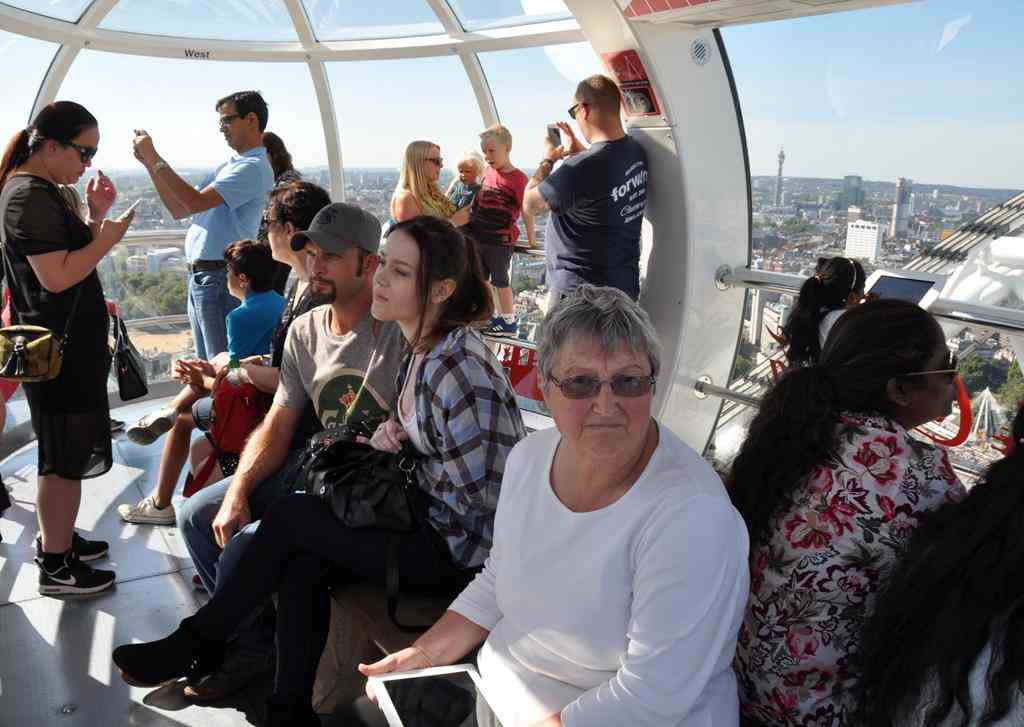
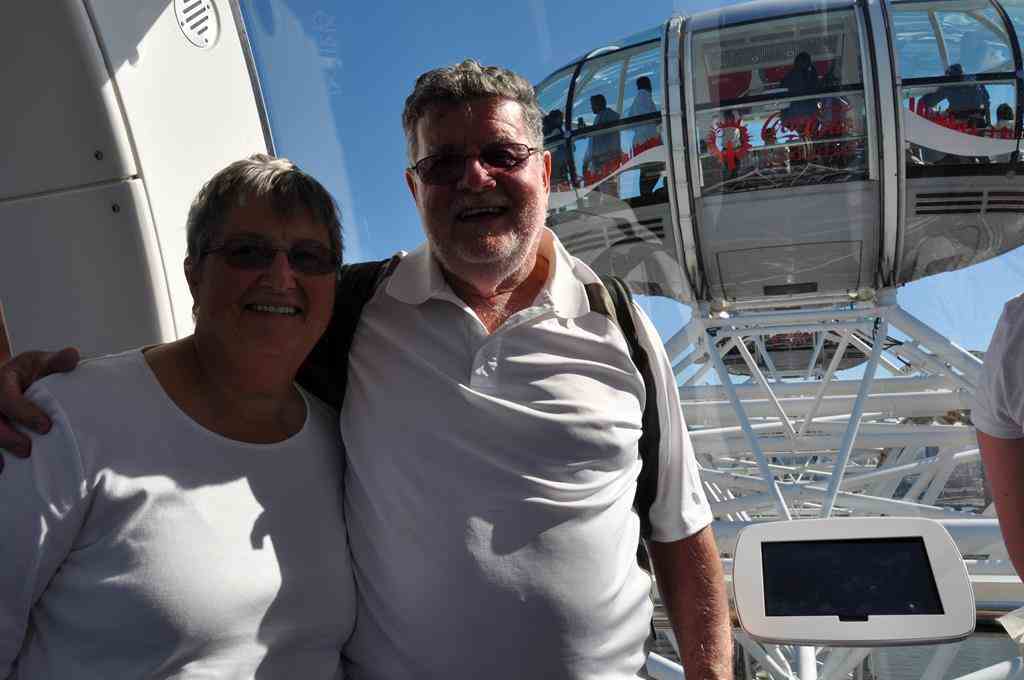
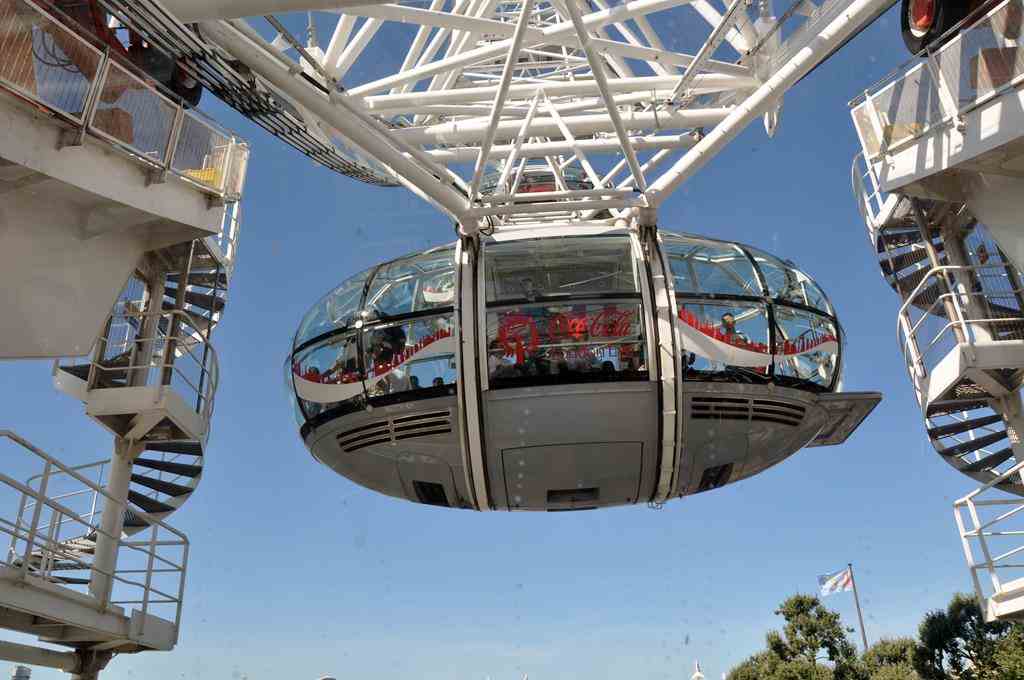
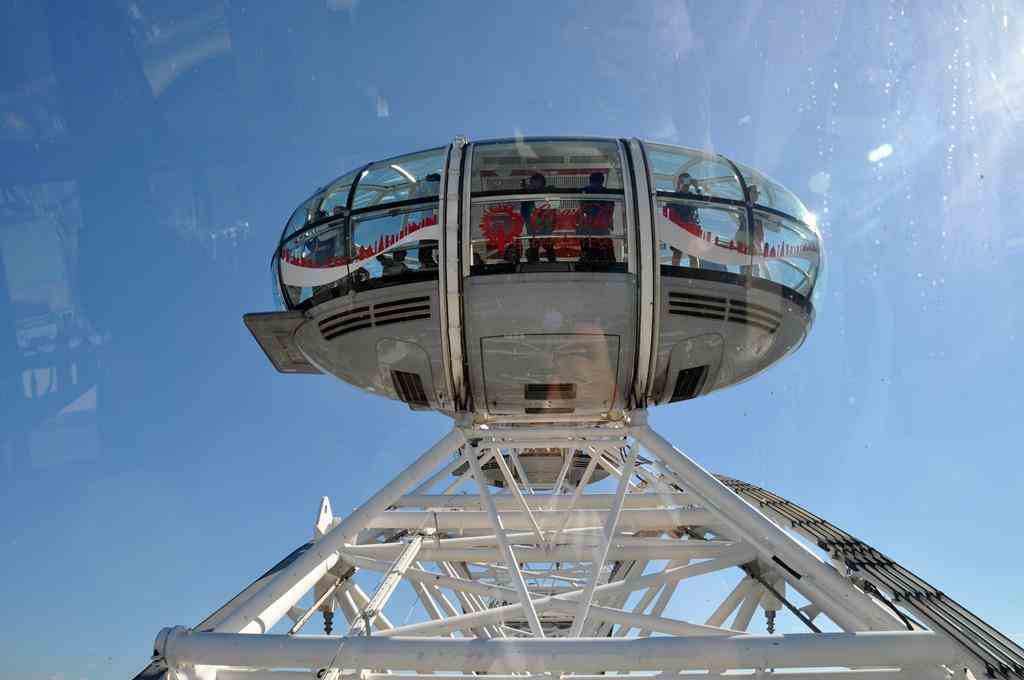
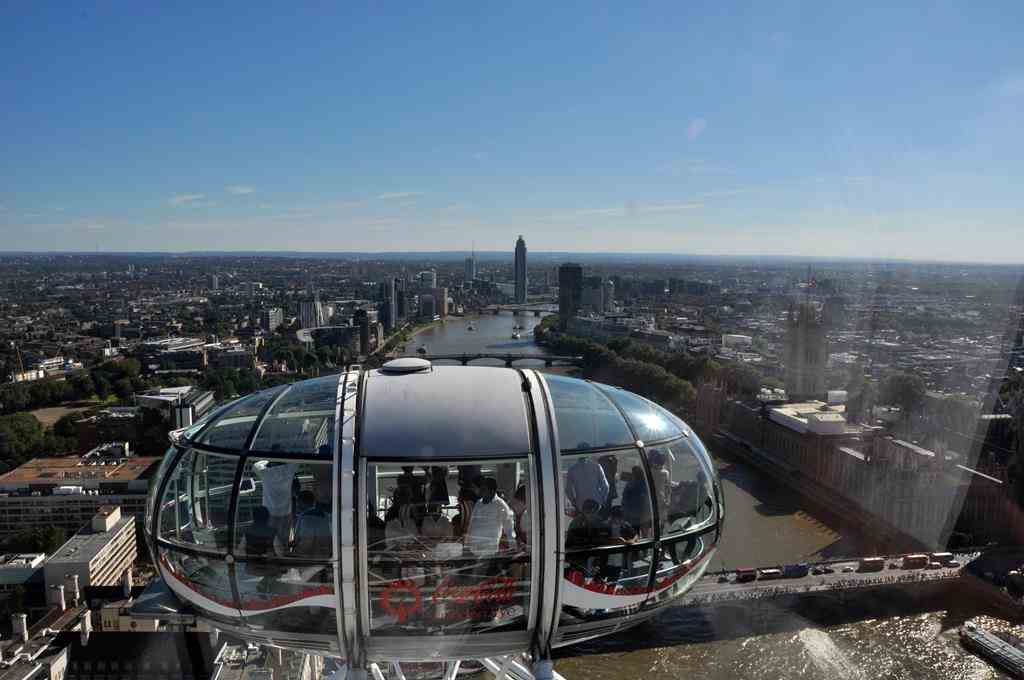
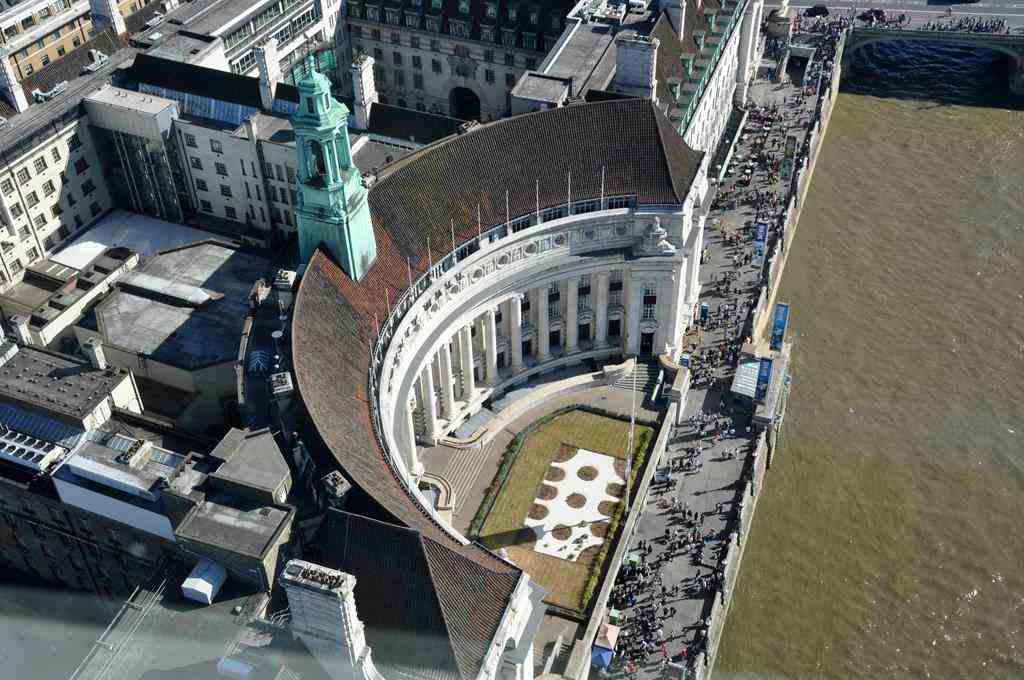
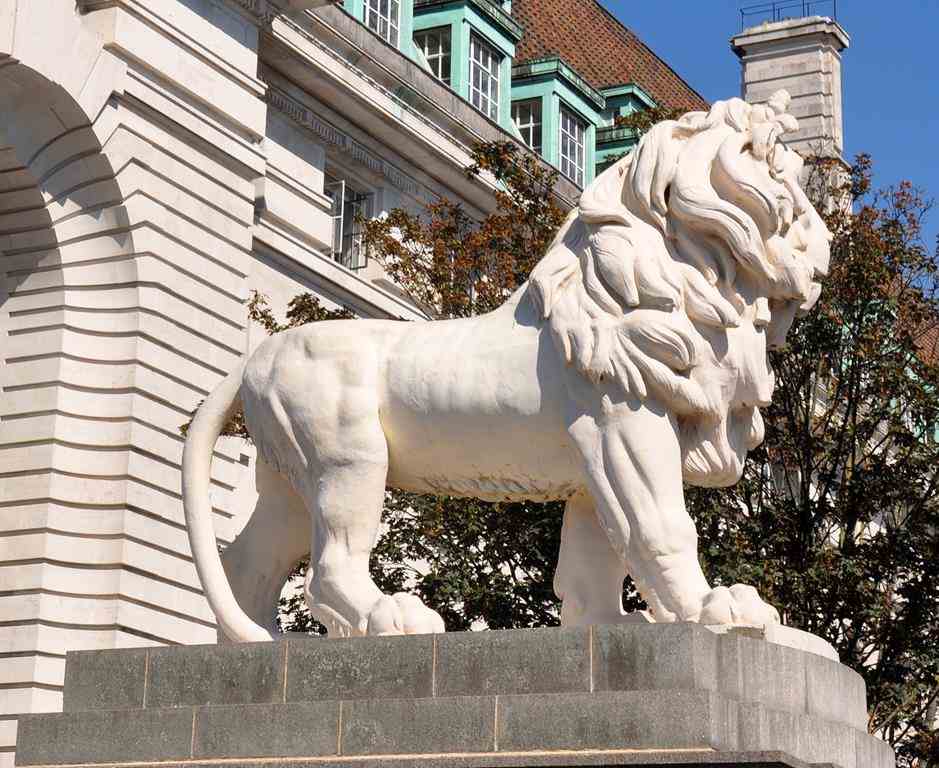
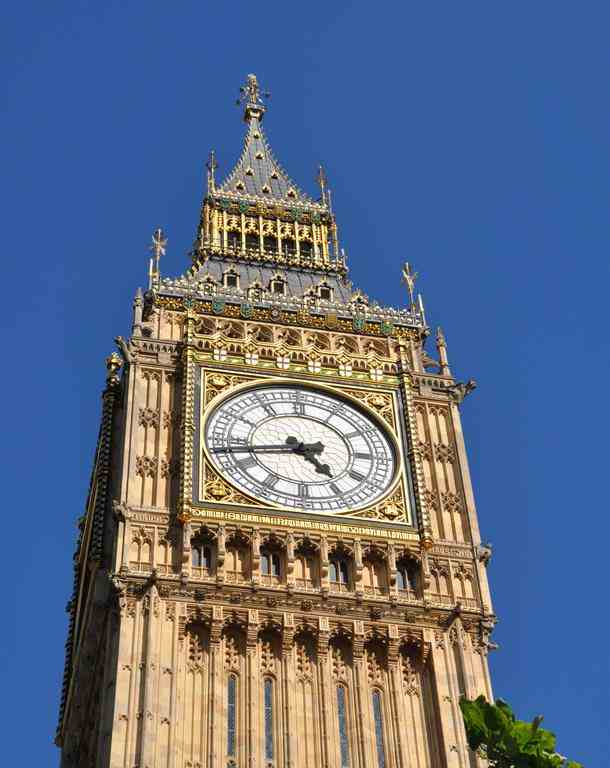
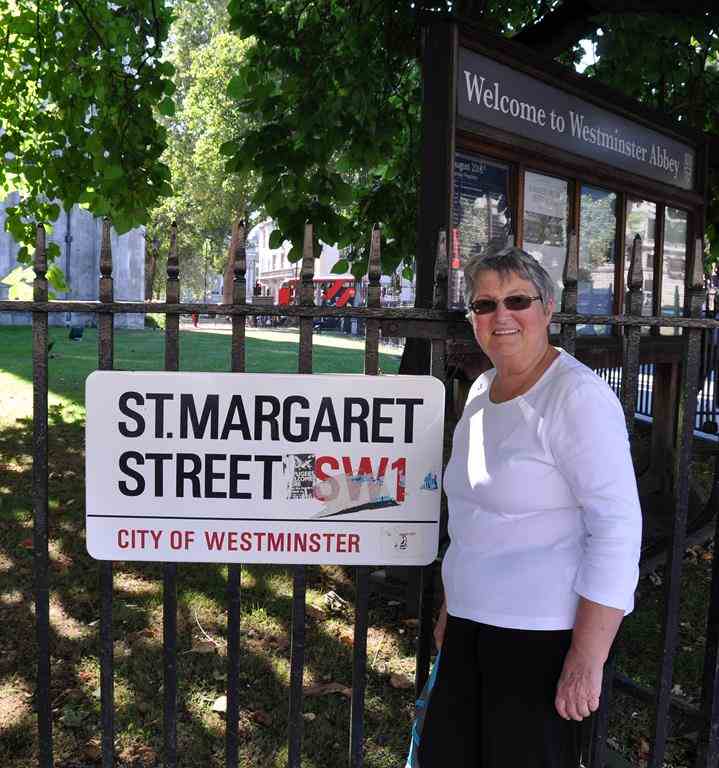
Royal Albert Hall
Seating up to 5,272 patrons, The Royal Albert Hall in South Kensington, London, has held the Proms concerts annually each summer since 1941.
The Hall was originally supposed to have been called the Central Hall of Arts and Sciences,
but the name was changed to the Royal Albert Hall of Arts and Sciences by Queen Victoria upon laying the Hall's foundation stone in 1867,
in memory of her husband consort, Prince Albert who had died six years earlier.
We had a tour of the hall.
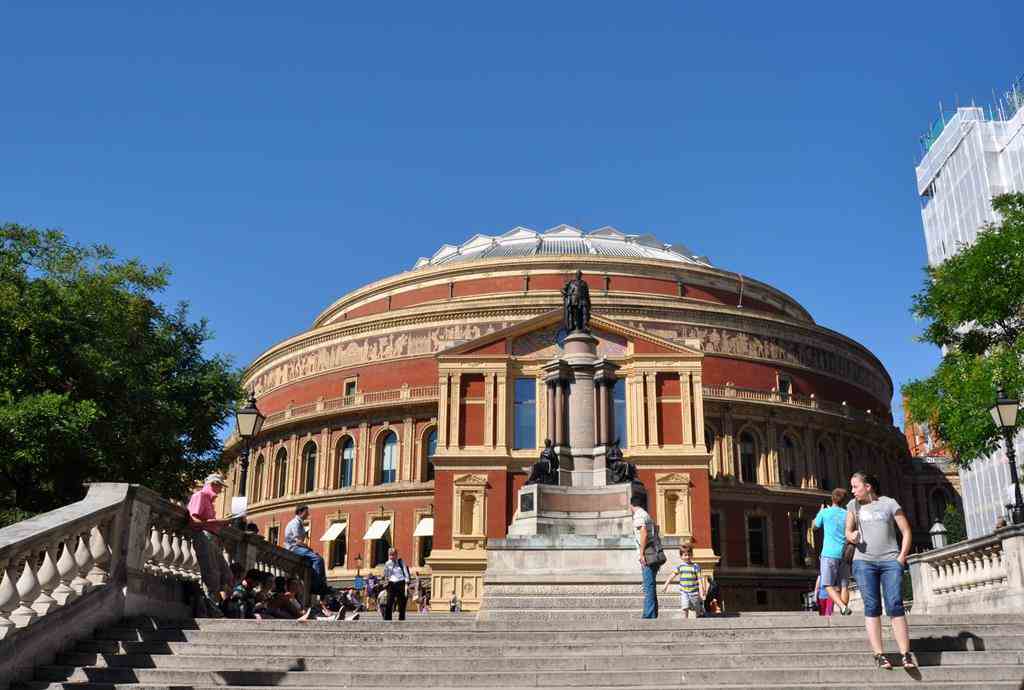
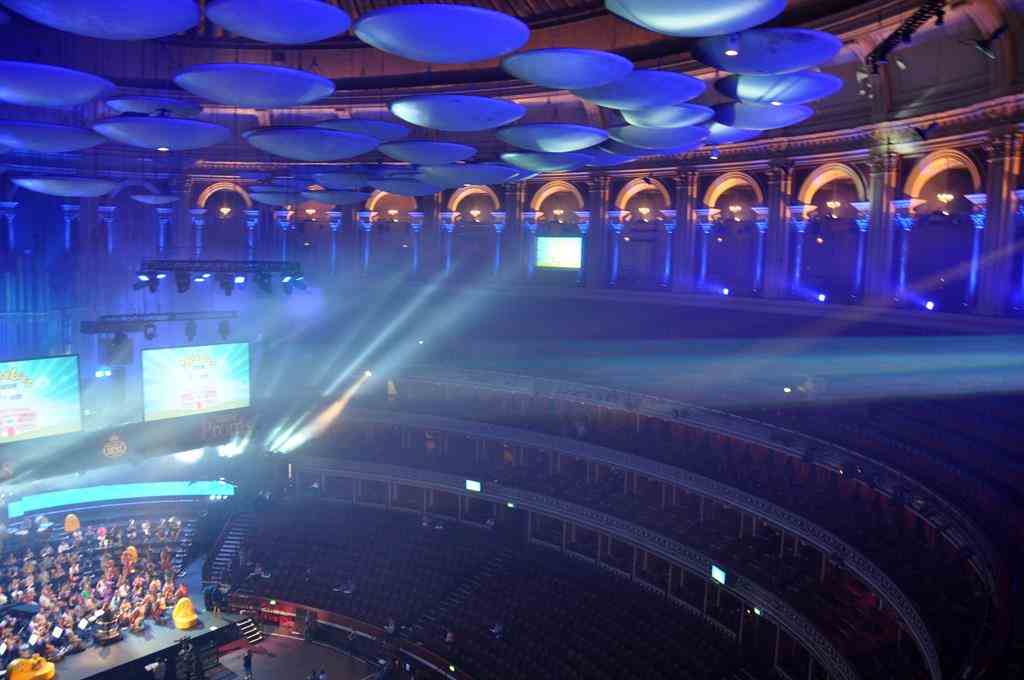
We went on a 9-day tour of England, Scotland and Wales.
(London - Stratford - York - Edinburgh - Glasgow - Lake District - Cardiff - Cornwall - London)
The Cotswolds
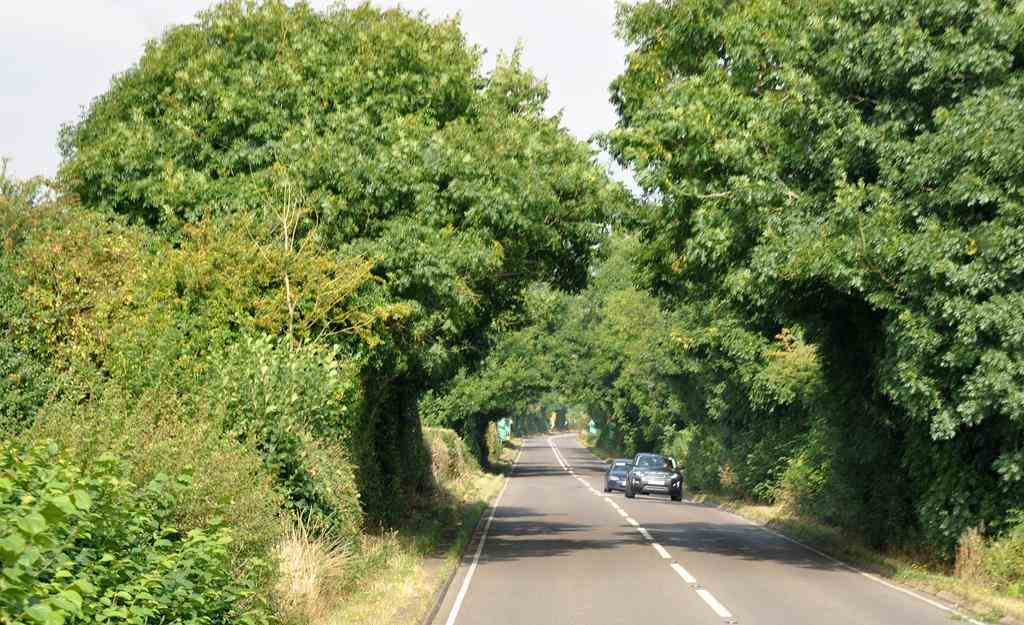
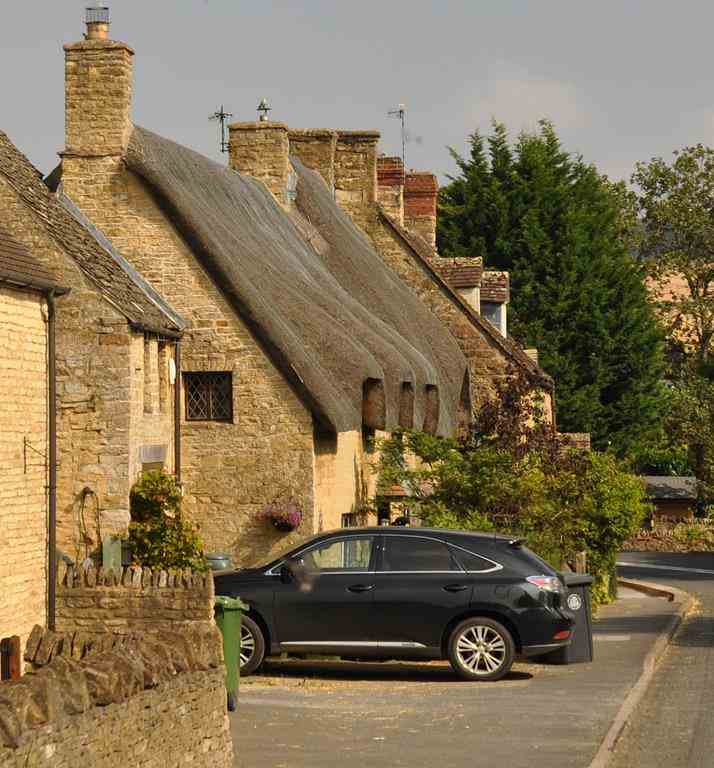
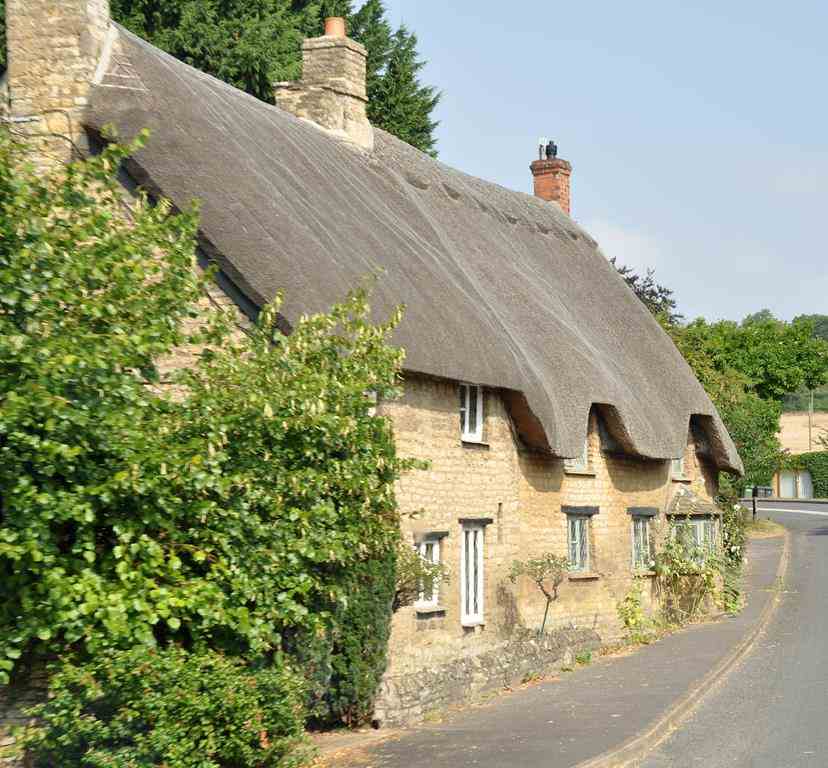
Stratford-on-Avon
The Royal Shakespeare Theatre opened in 1932 on the site adjacent to the original Shakespeare Memorial Theatre (opened in 1879),
which had been destroyed by fire in March 1926. It seats 1040 patrons.
The architect was Elisabeth Scott. The theatre became the first important work erected in the UK from the designs of a woman architect.
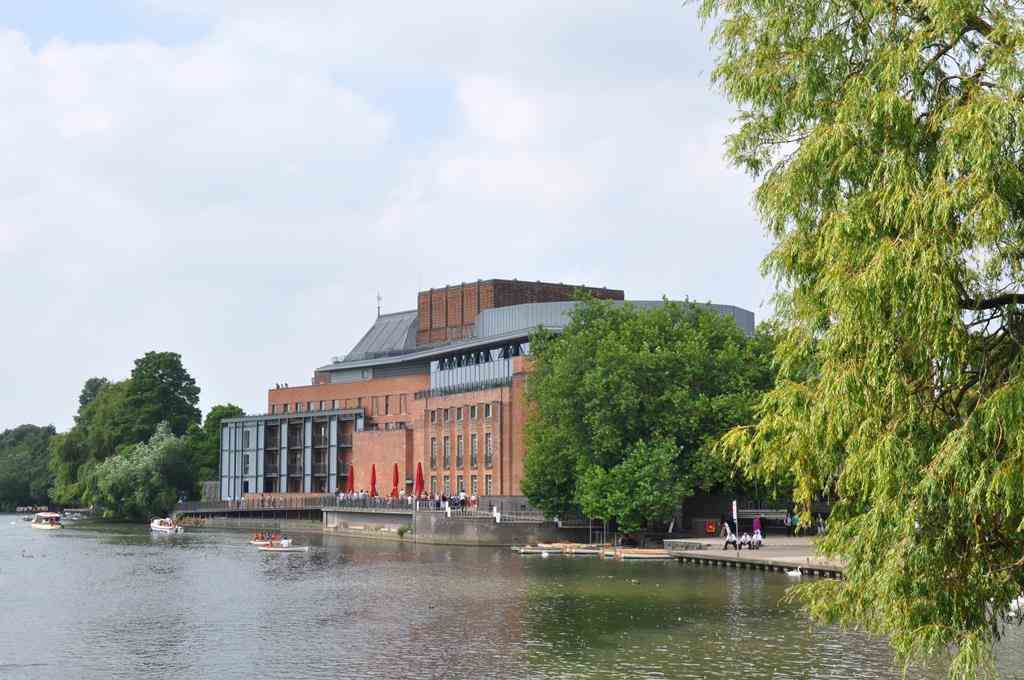
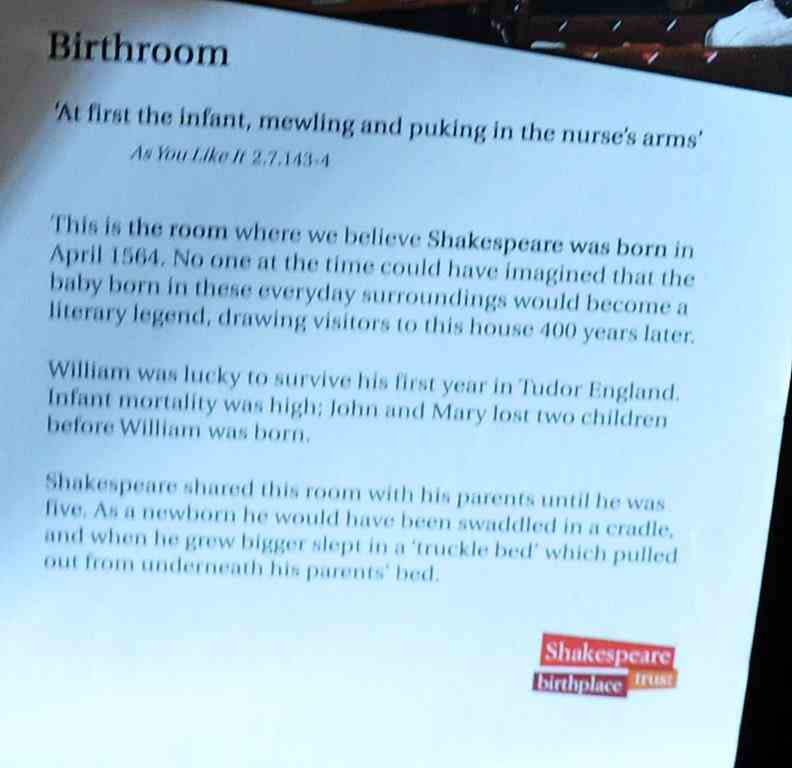
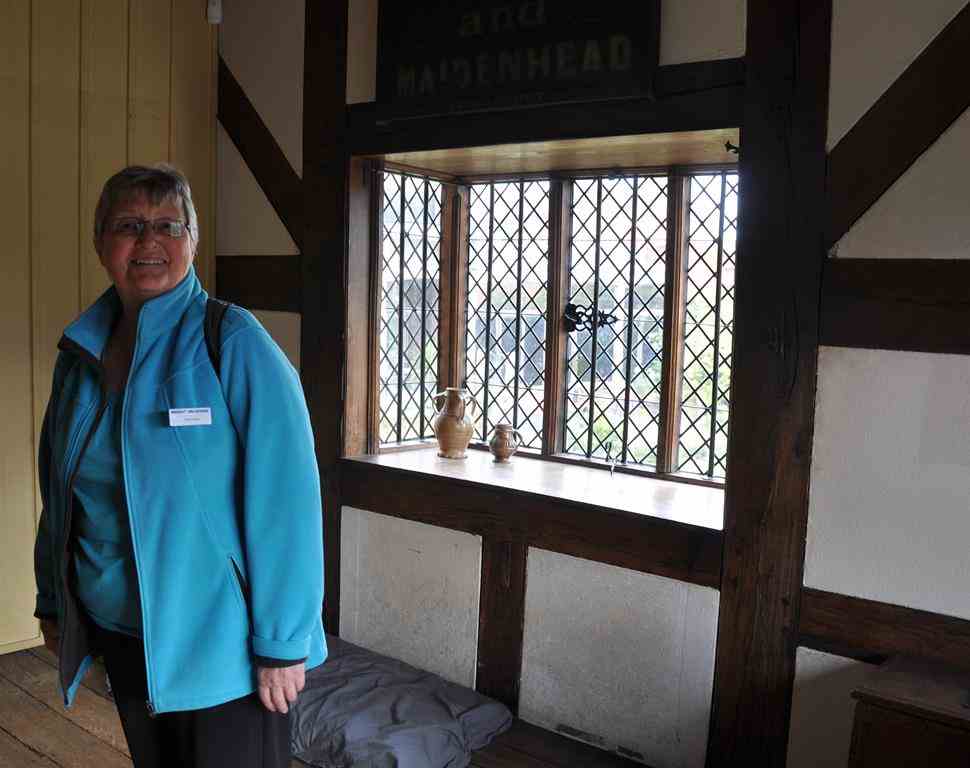
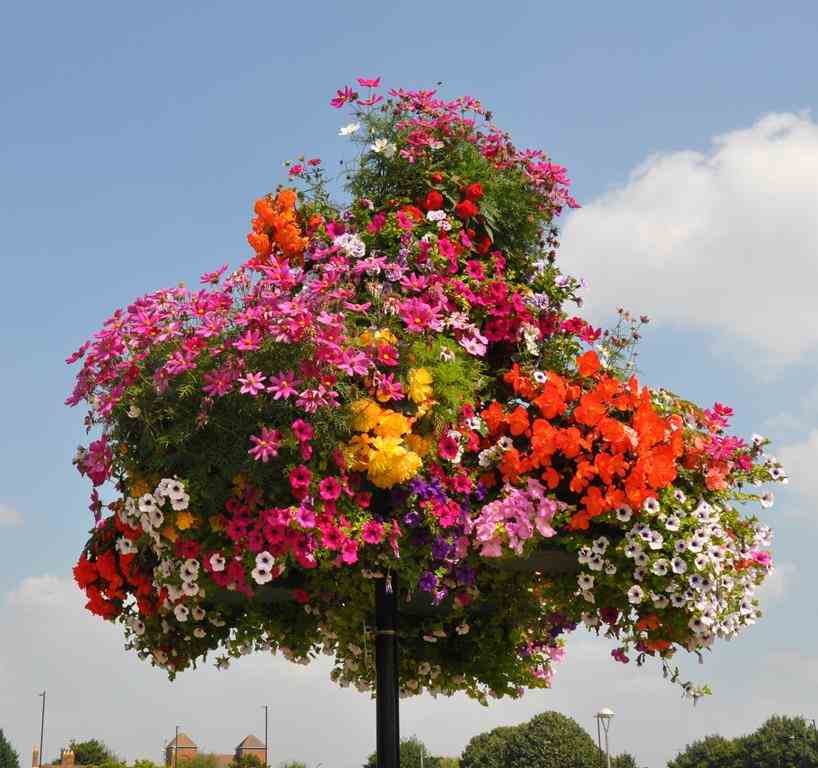
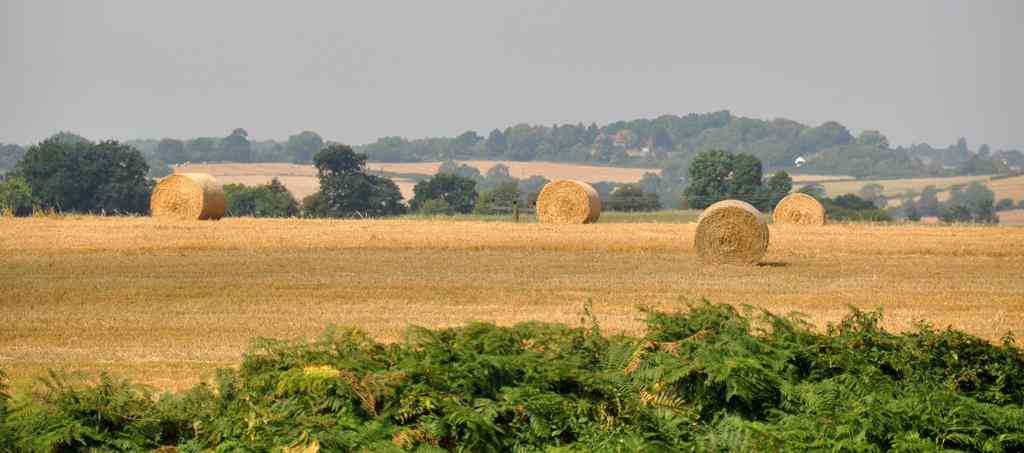
York
York is a historic walled city about 280km north of London.
The city was founded by the Romans as Eboracum in 71 AD.
York grew as a major wool trading centre and in the 19th century,
York became a hub of the railway network and a confectionery manufacturing centre.
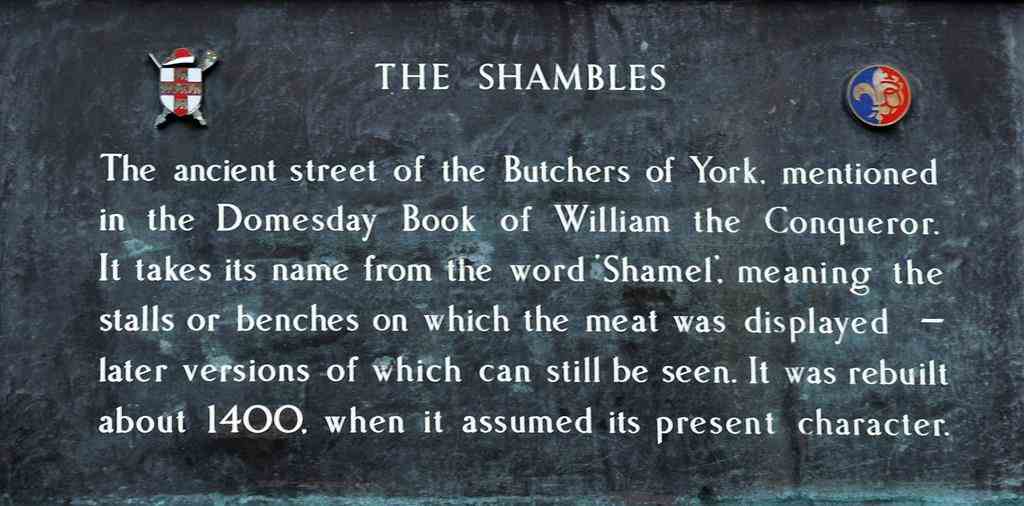

York Minster
The Cathedral, commonly known as York Minster, is one of the largest of its kind in Northern Europe.
The minster is the seat of the Archbishop of York, the second-highest office of the Church of England.
The title "minster" is attributed to churches established in the Anglo-Saxon period as missionary teaching churches.
It was too late in the day for a tour inside the cathedral.
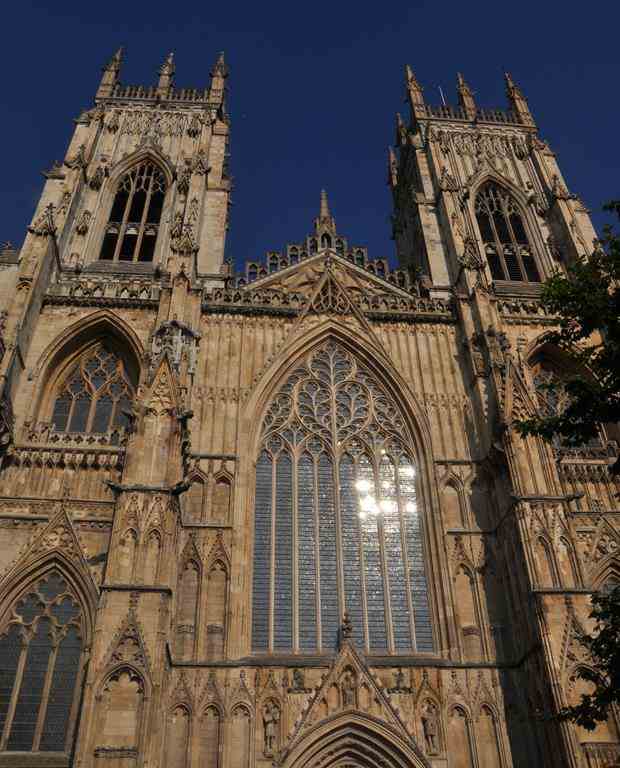
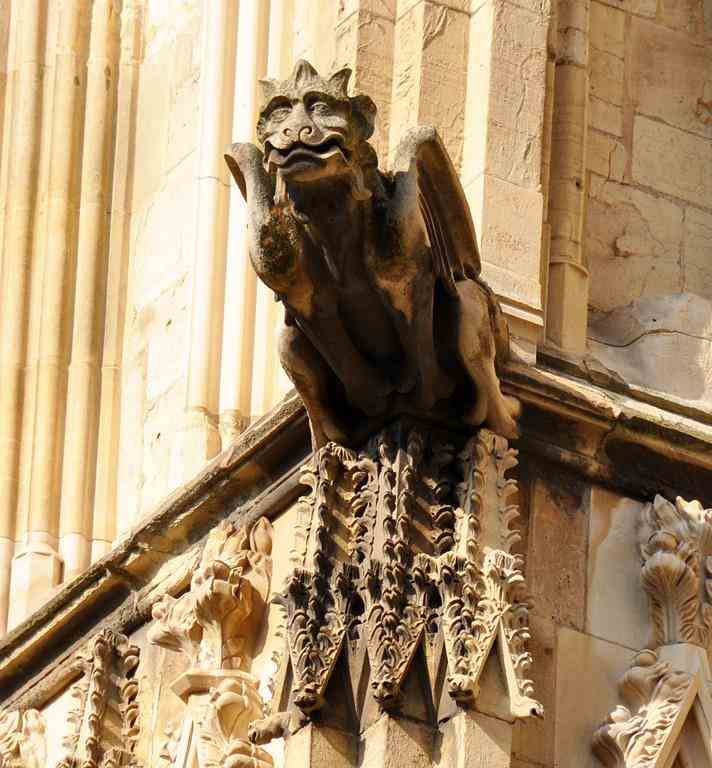
Clifford's Tower
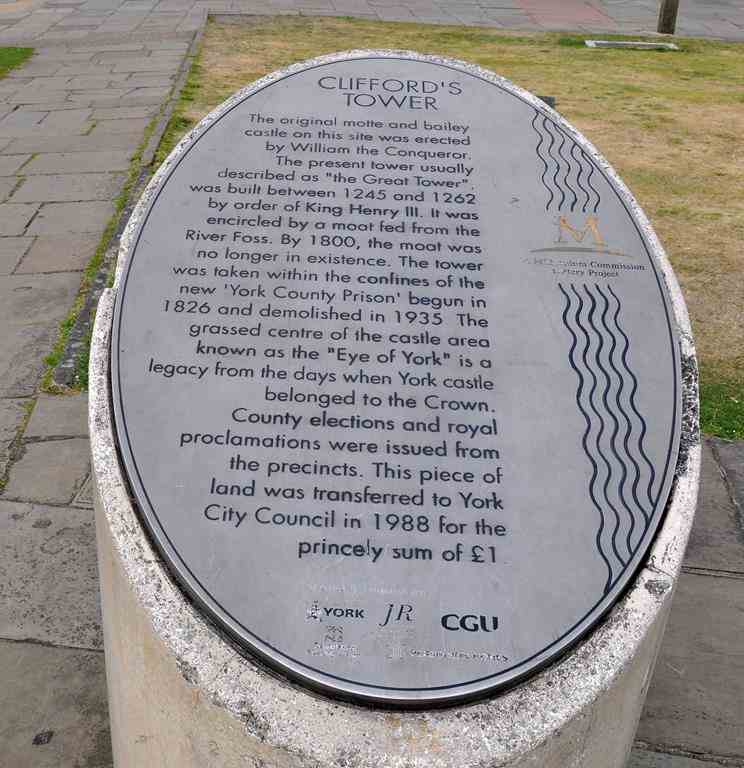
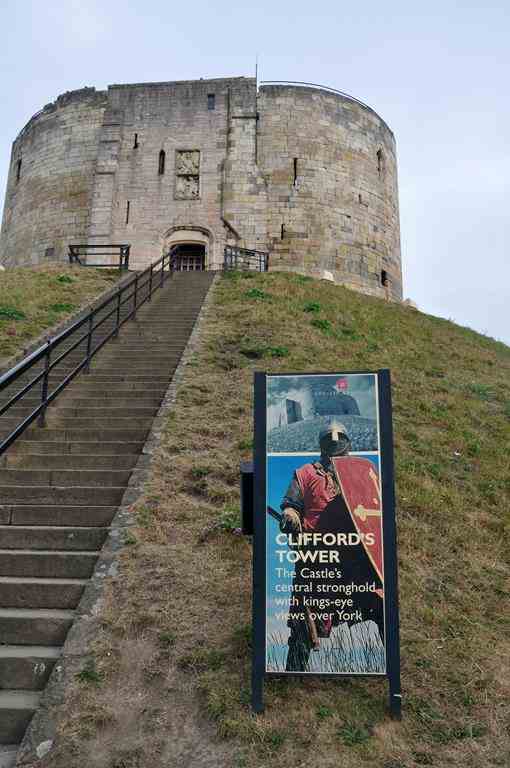
Hadrian's Wall
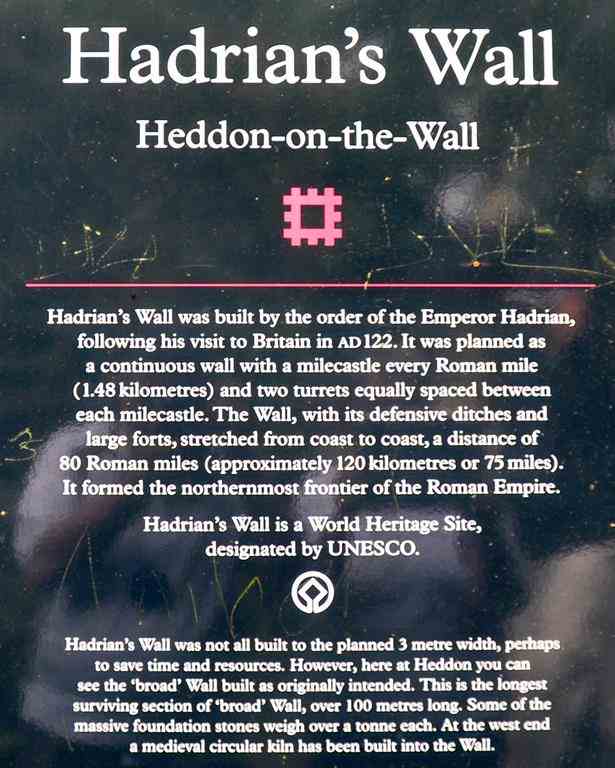
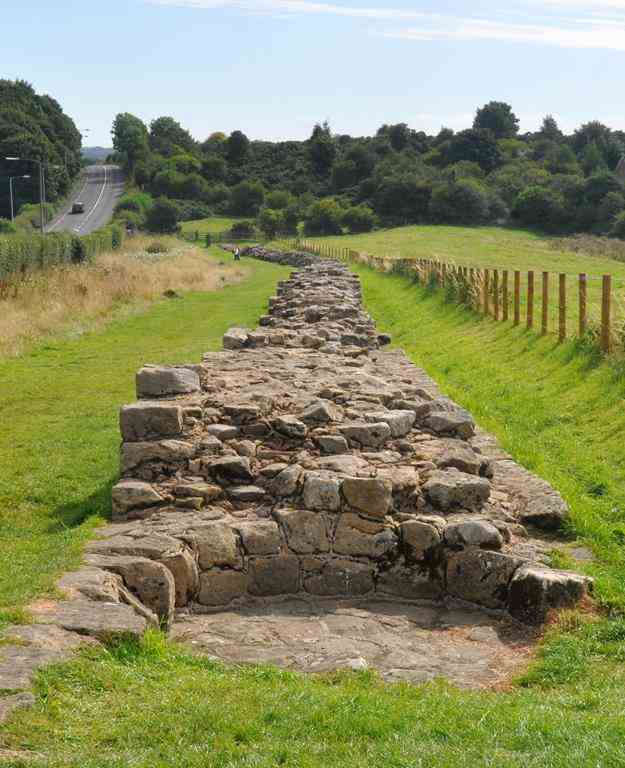
Scotland
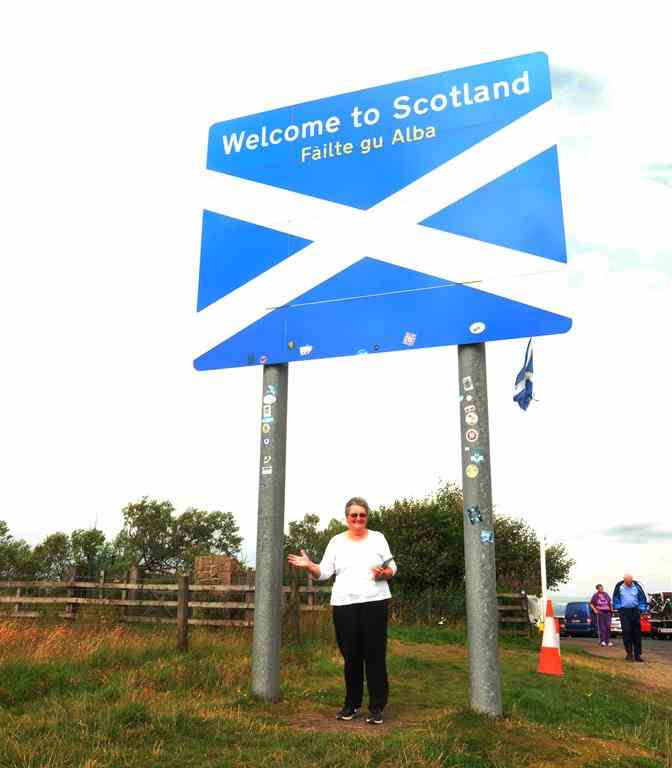
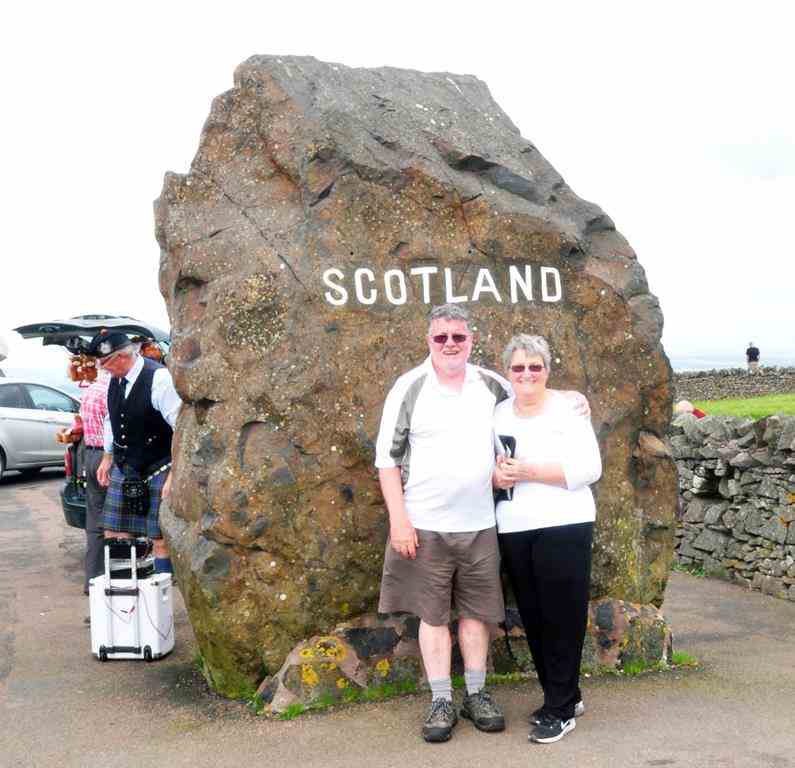
Edinburgh
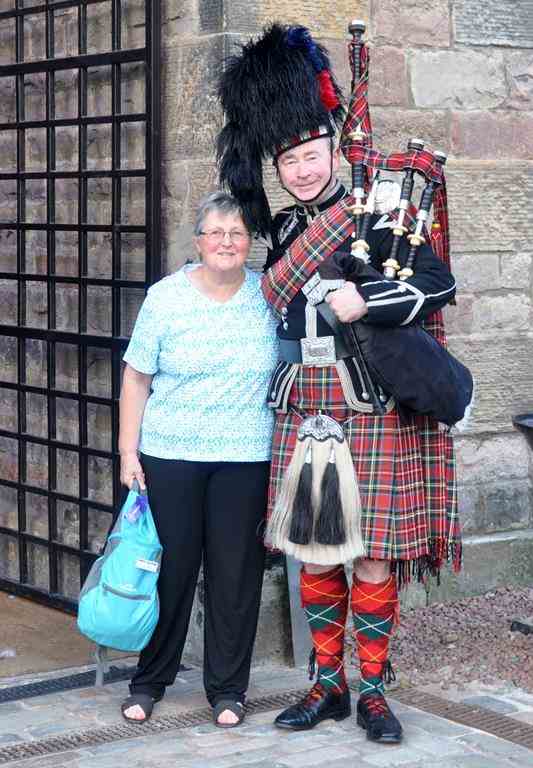
A night at the Edinburgh Tattoo
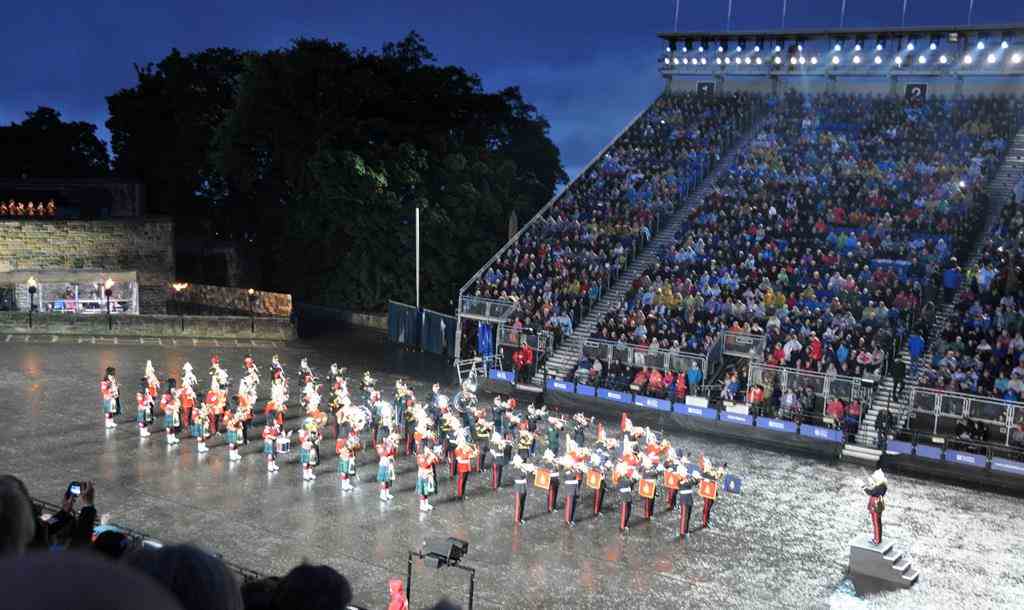
The William Wallace monument stands on the Abbey Craig, a volcanic crag above Cambuskenneth Abbey, from which Wallace
was said to have watched the gathering of the army of King Edward I of England, just before the Battle of Stirling Bridge in 1297.
William Wallace (died 1305) was a Scottish knight who became one of the main leaders during the Wars of Scottish Independence.
Along with Andrew Moray, Wallace defeated an English army at the Battle of Stirling Bridge in September 1297.
He was appointed Guardian of Scotland and served until his defeat at the Battle of Falkirk in July 1298.
In August 1305, Wallace was captured in Robroyston, near Glasgow, and handed over to King Edward I of England,
who had him hanged, drawn, and quartered for high treason and crimes against English civilians.
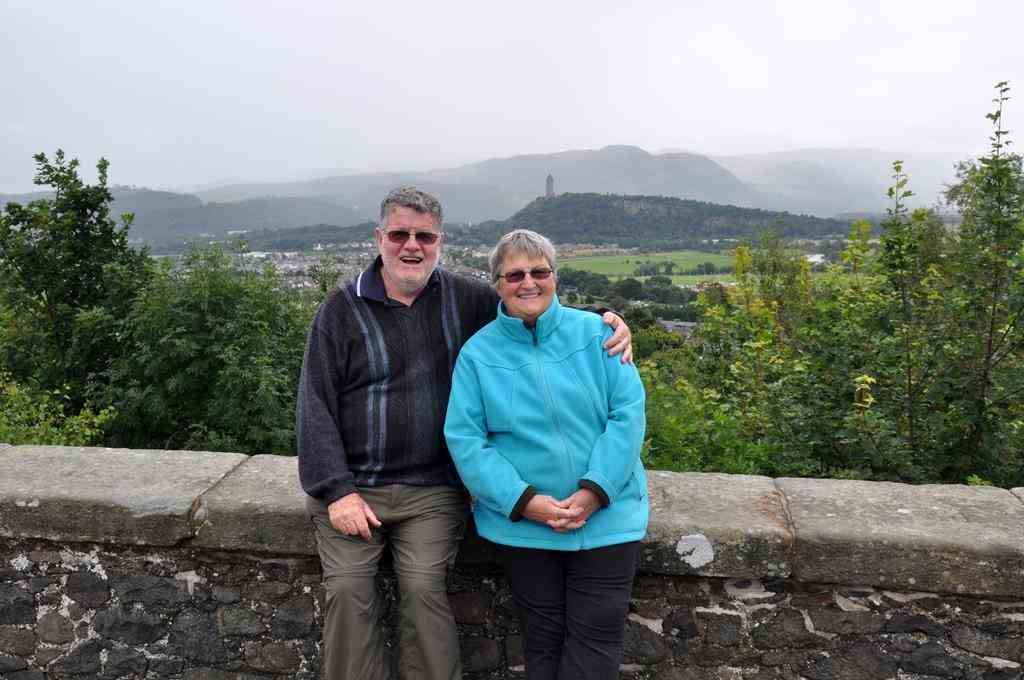
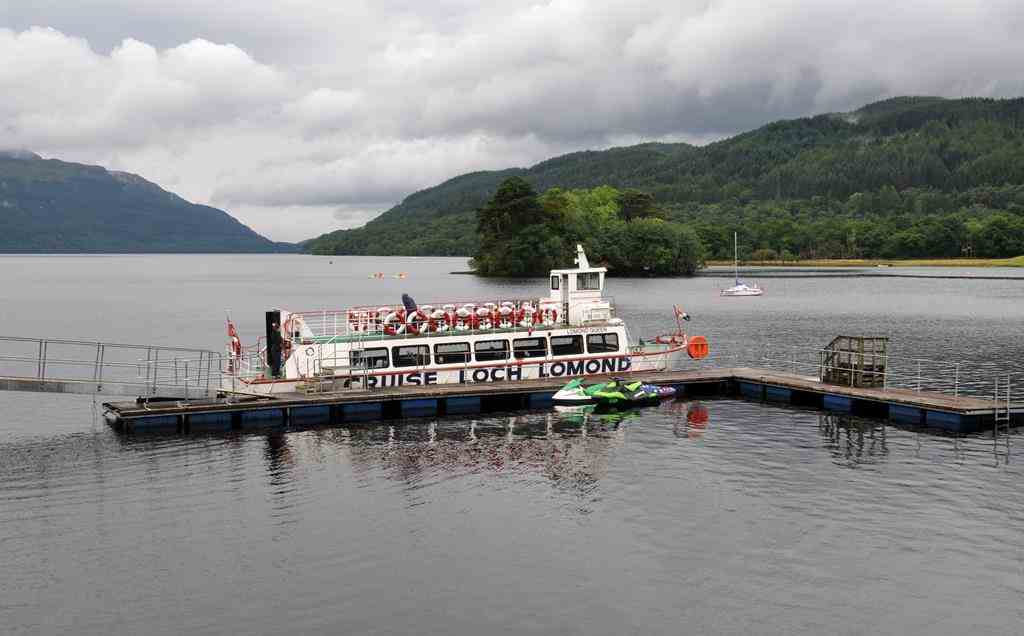
Back to England - The Lakes District
"I Wandered Lonely as a Cloud" (also commonly known as "Daffodils") is Wordsworth's most famous work.
The inspiration for the poem came from a walk Wordsworth took with his sister Dorothy around Glencoyne Bay,
Ullswater, in the Lake District in 1802.
Wordworth's grave at Grasmere.
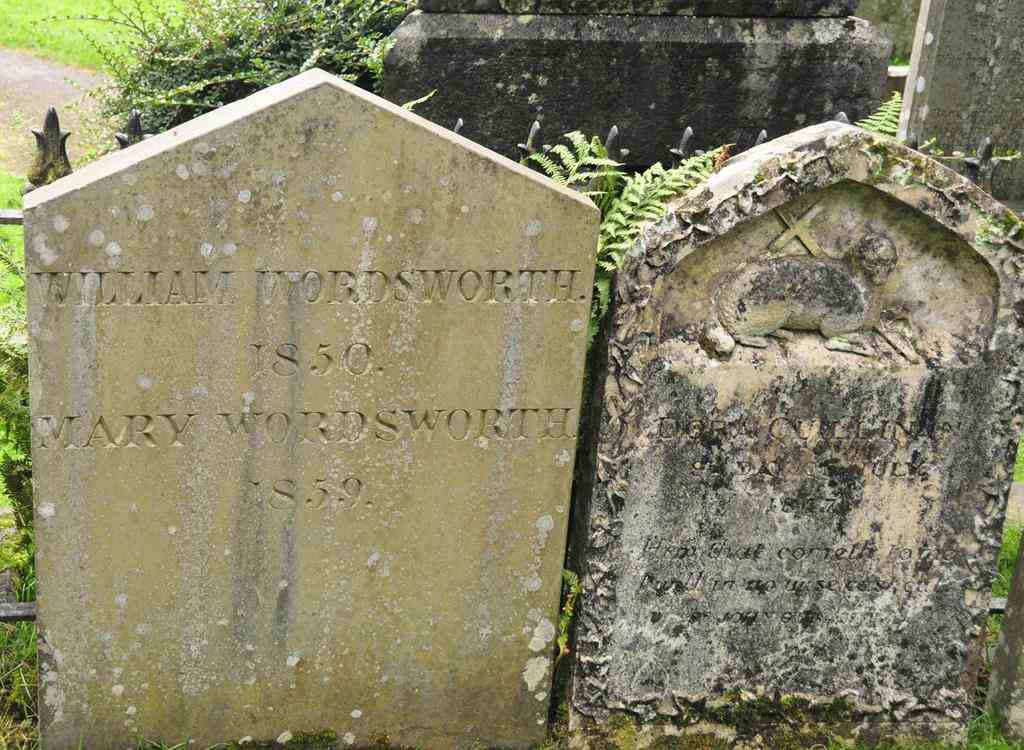
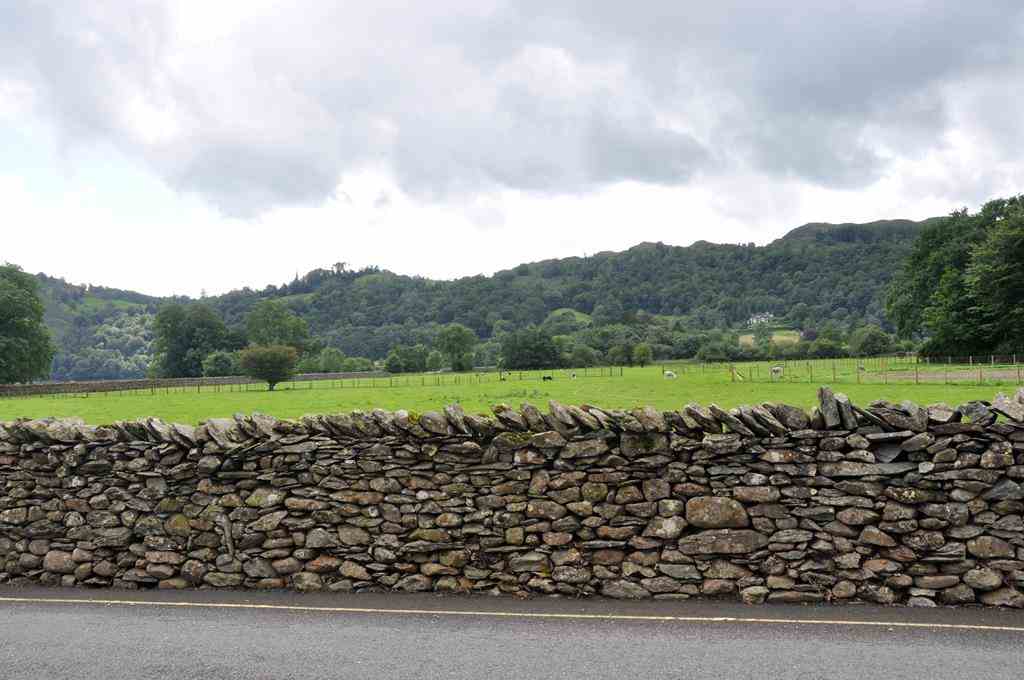

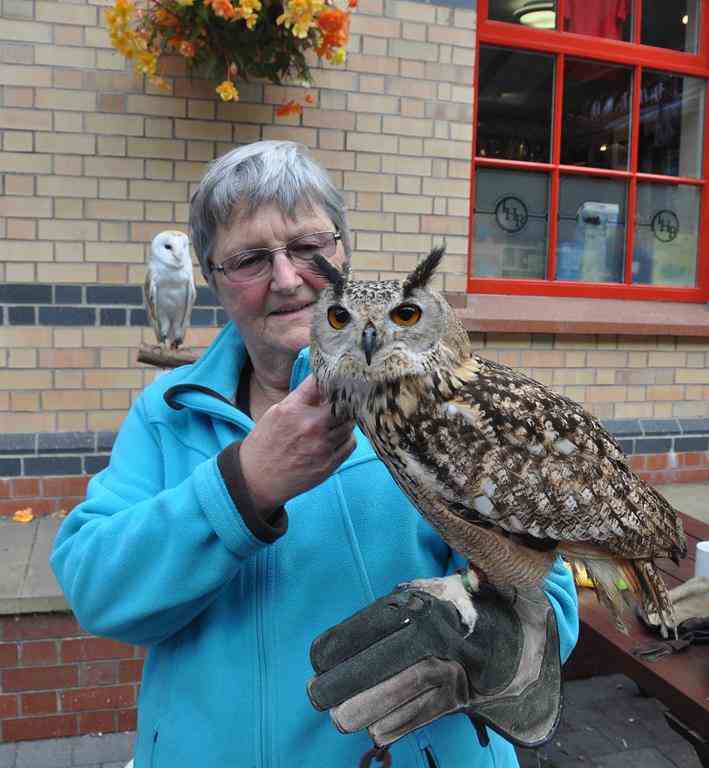
Wales
Cardiff
Cardiff Castle
Cardiff Castle, a medieval castle and Victorian Gothic revival mansion is located in the city centre of Cardiff, Wales.
The original motte and bailey castle was built in the late 11th century by Norman invaders on top of a 3rd-century Roman fort.
The castle was commissioned by either William the Conqueror or by Robert Fitzhamon, and formed the heart of the medieval town of Cardiff.
In the 12th century the castle began to be rebuilt in stone, probably by Robert of Gloucester,
with a shell keep and substantial defensive walls being erected.
Further work was conducted by Richard de Clare, 6th Earl of Gloucester in the second half of the 13th century.
Cardiff Castle was repeatedly involved in the conflicts between the Anglo-Normans and the Welsh, being attacked several times in the 12th century,
and stormed in 1404 during the revolt of Owain Glyndŵr.
In the mid-18th century, Cardiff Castle passed into the hands of the Marquesses of Bute. John Stuart,
the first Marquess, employed Capability Brown and Henry Holland to renovate the main range, turning it into a Georgian mansion.
During the first half of the 19th century the family became extremely wealthy as a result of the growth of the coal industry in Glamorgan.
The third Marquess, John Crichton-Stuart, used this wealth to back an extensive programme of renovations under William Burges.
Burges remodelled the castle in a Gothic revival style, lavishing money and attention on the main range.
The resulting interior designs are considered to be amongst "the most magnificent that the gothic revival ever achieved".
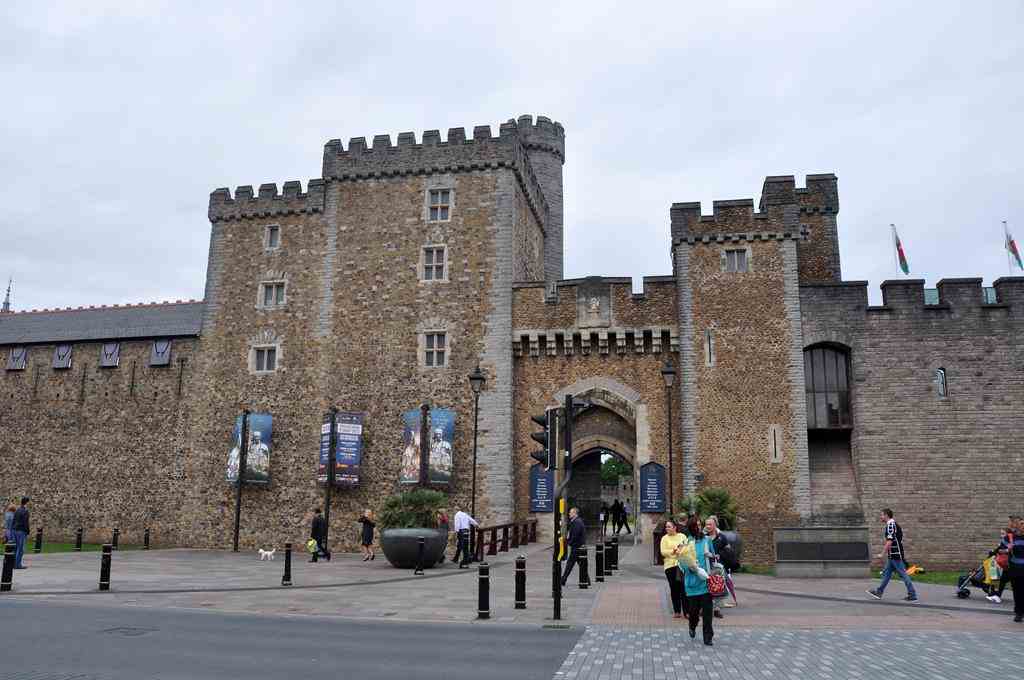
The Keep at Cardiff Castle
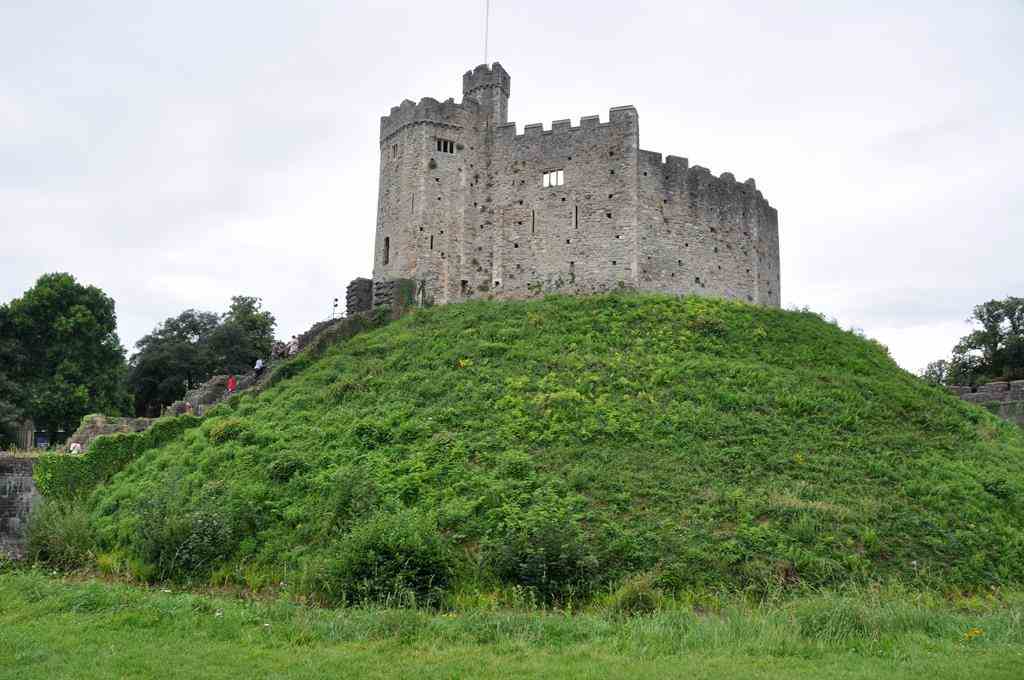
Bath
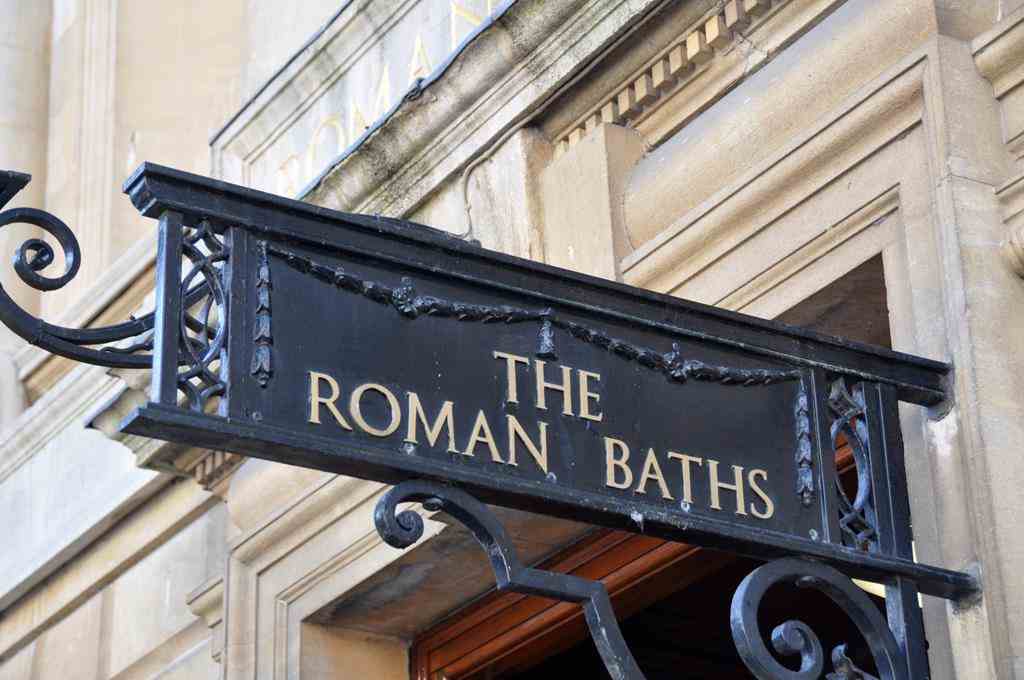
Devon
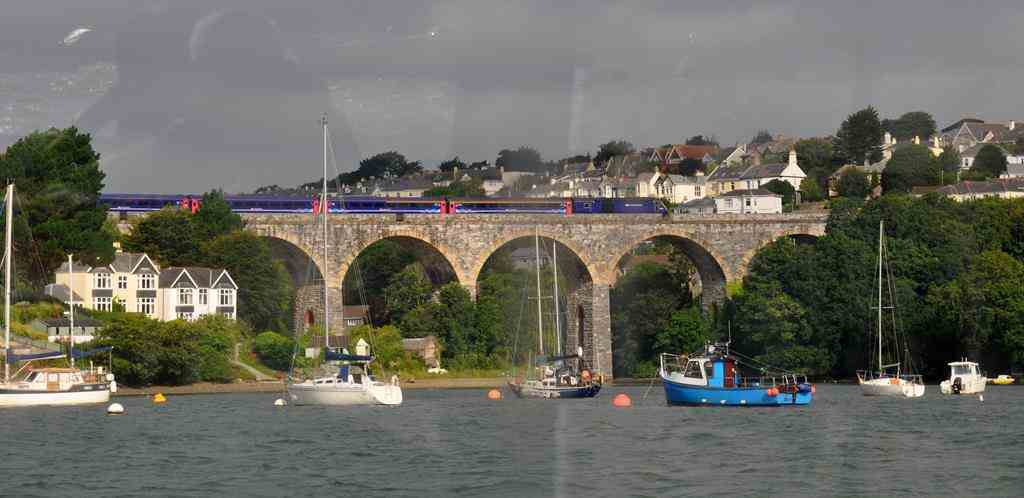
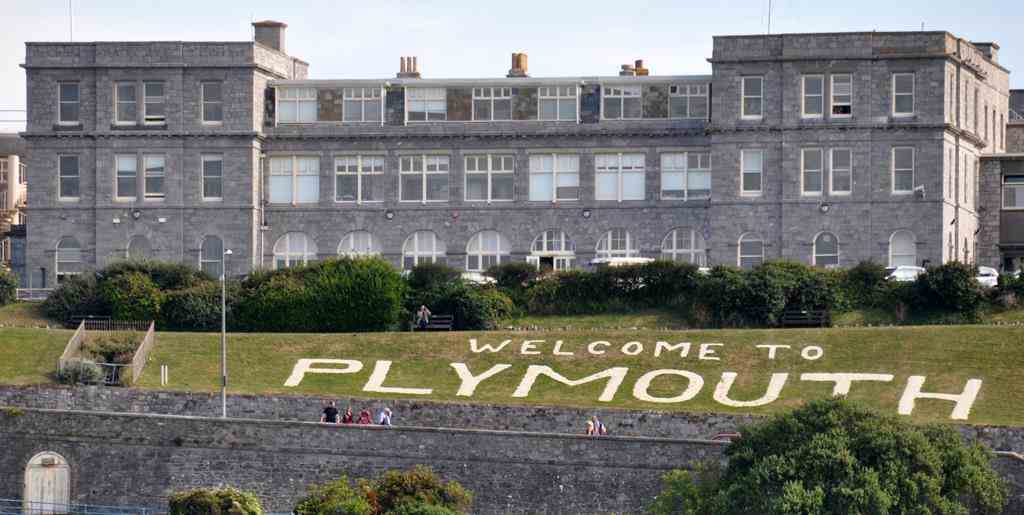
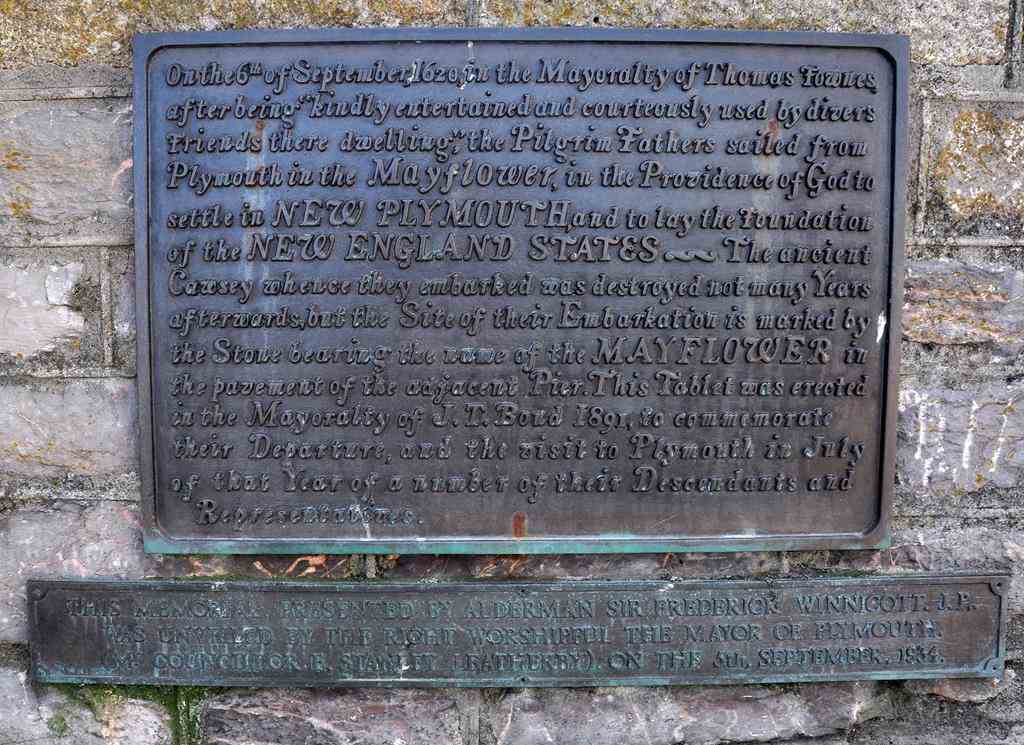
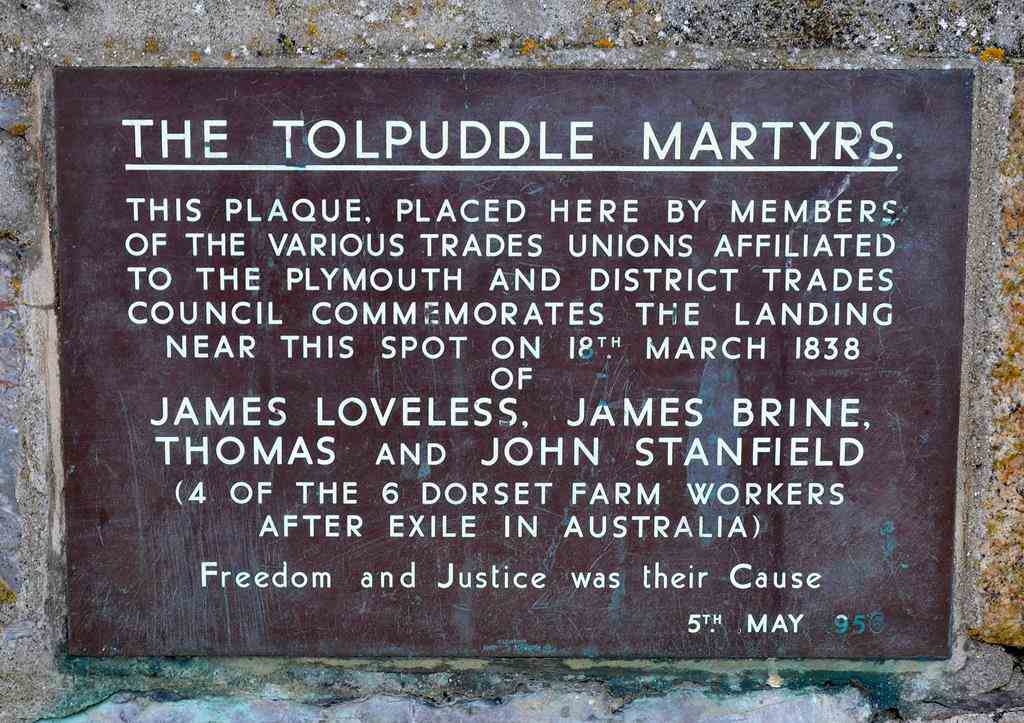
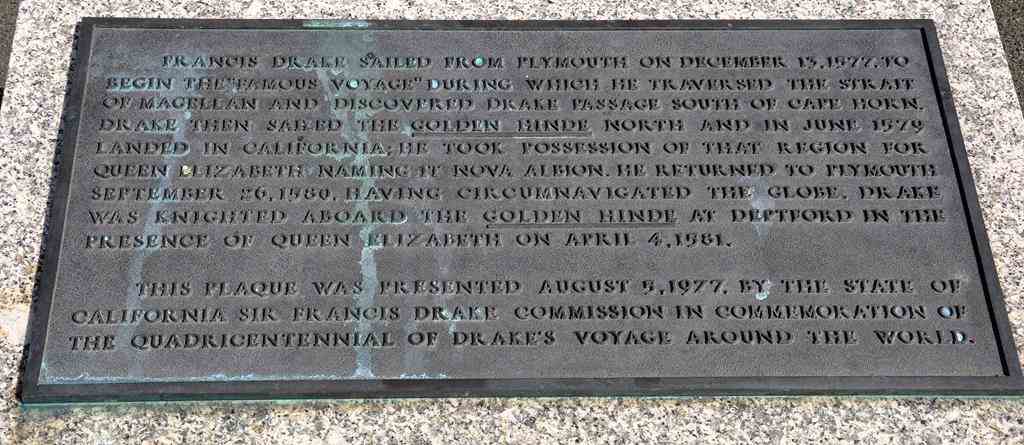
Plymouth Hoe is perhaps best known for the probably apocryphal story that Sir Francis Drake played his famous game of bowls here in 1588
while waiting for the tide to change before sailing out with the English fleet to engage with the Spanish Armada.
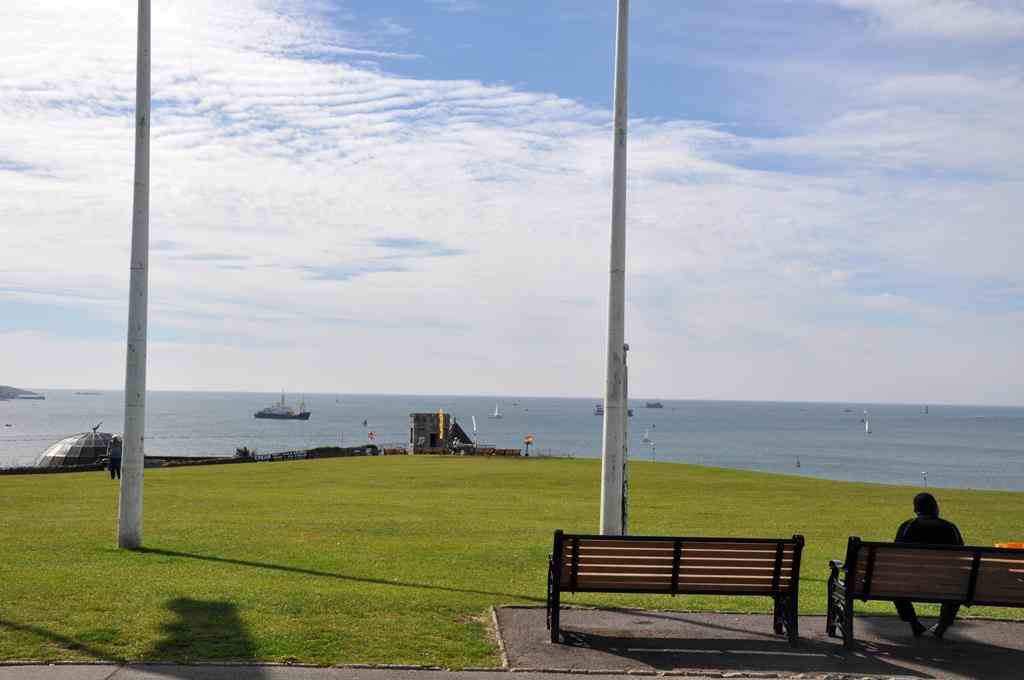
Cornwall
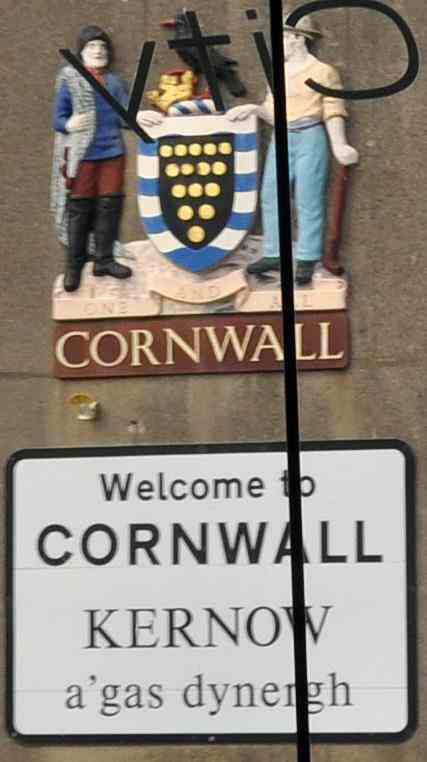
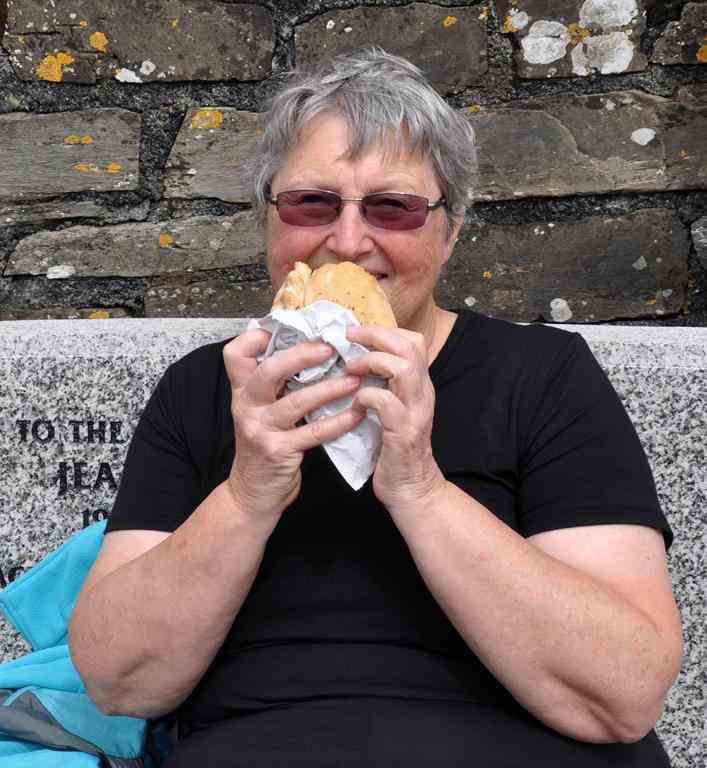
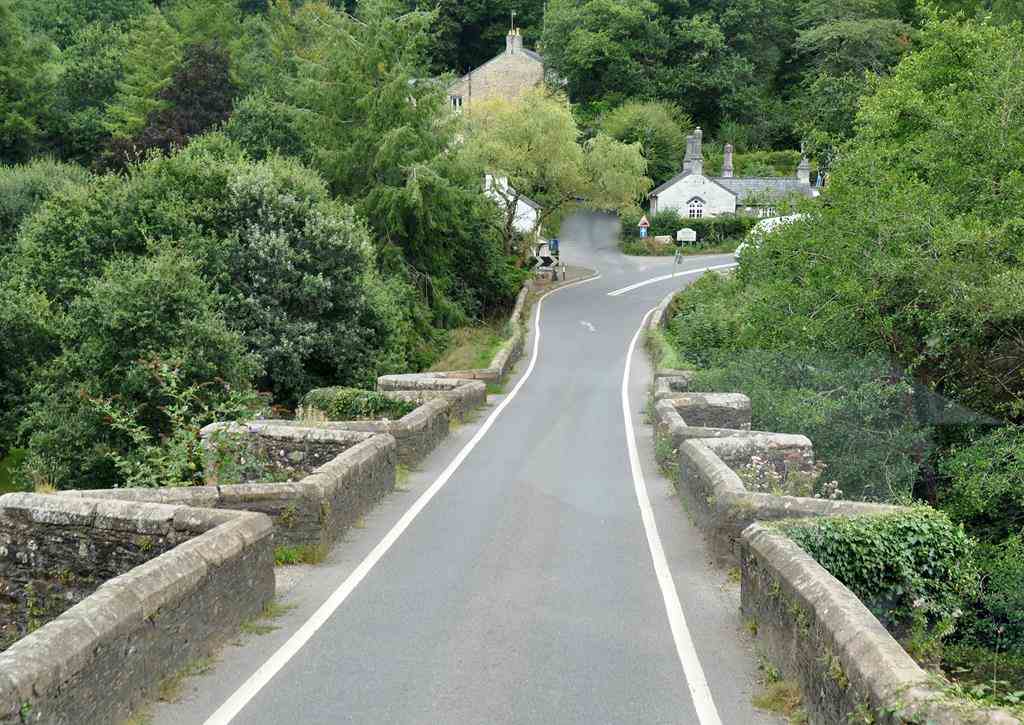
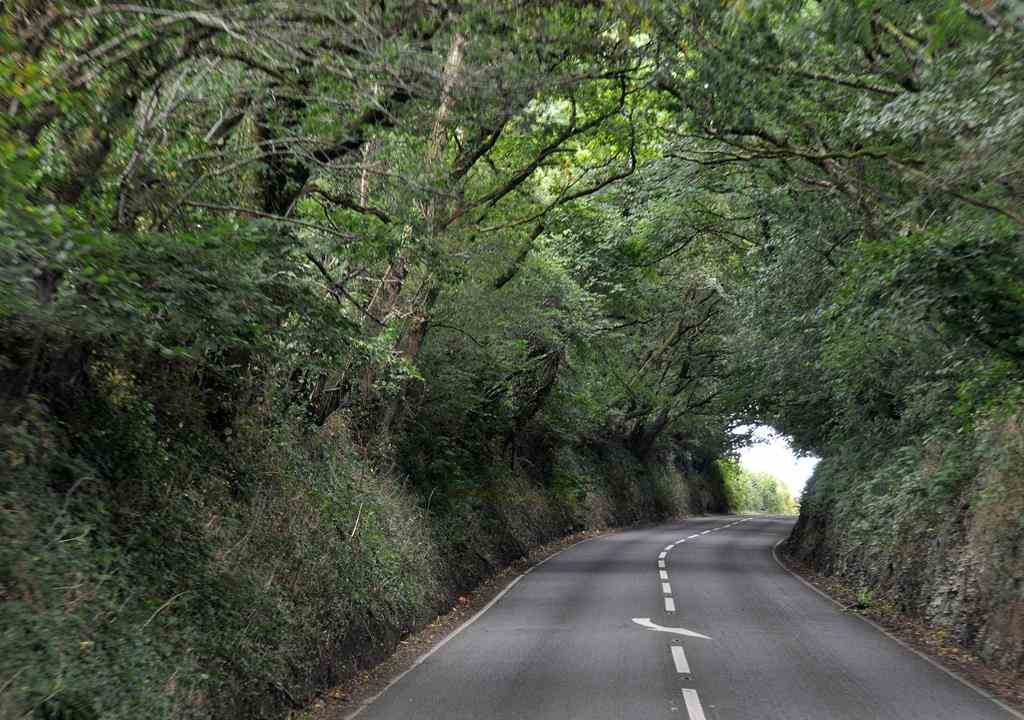
Dartmoor Moors in southern Devon
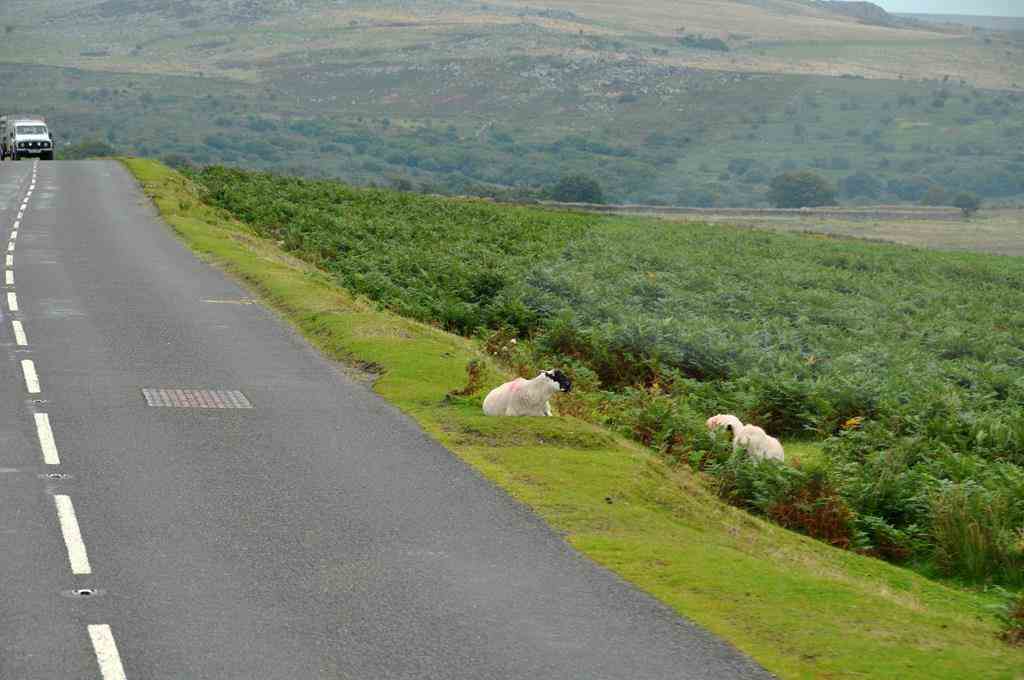
And so back to London for 2 nights before we flew to Edinburgh for a 9-day tour of Scotland.
(Edinburgh - St. Andrews - Inverness - Thurso - John O'Goats - Orkney Islands
- Isle of Skye - Fort William - Ballachulish - Loch Lomand - Glasgow)
Edinburgh Castle

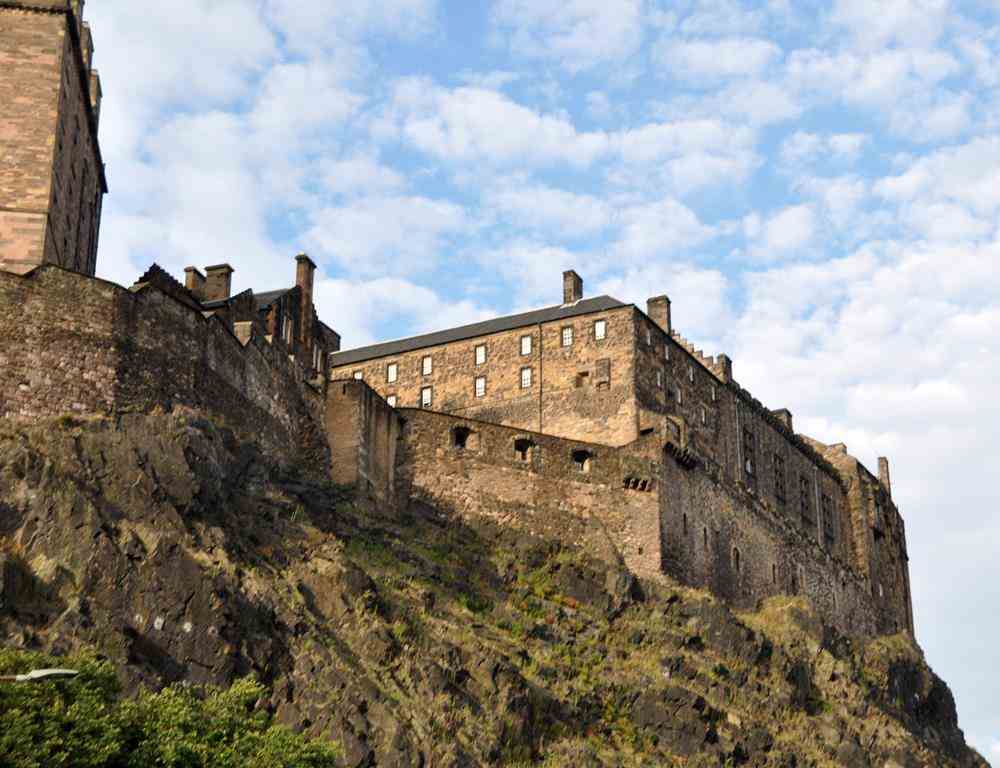
This time an afternoon at the Edinburgh Tattoo.
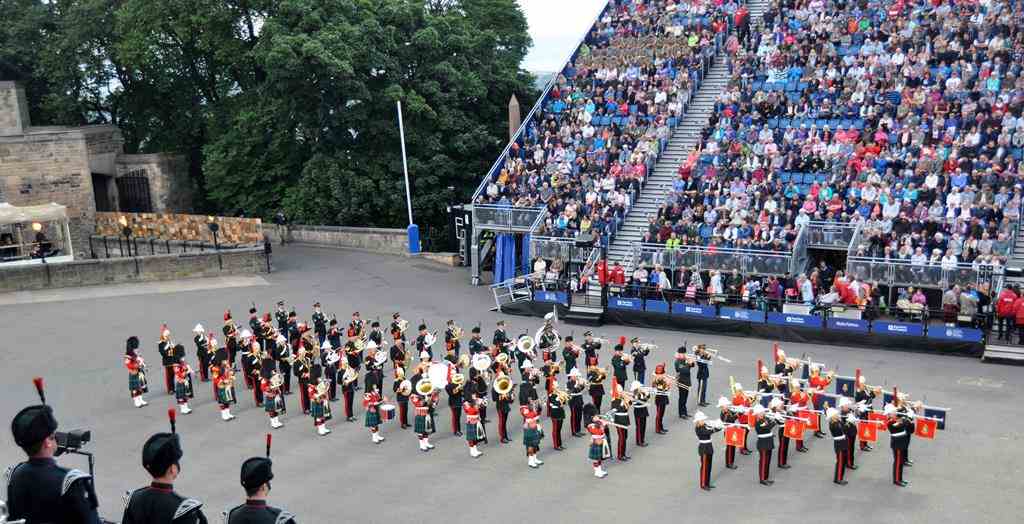
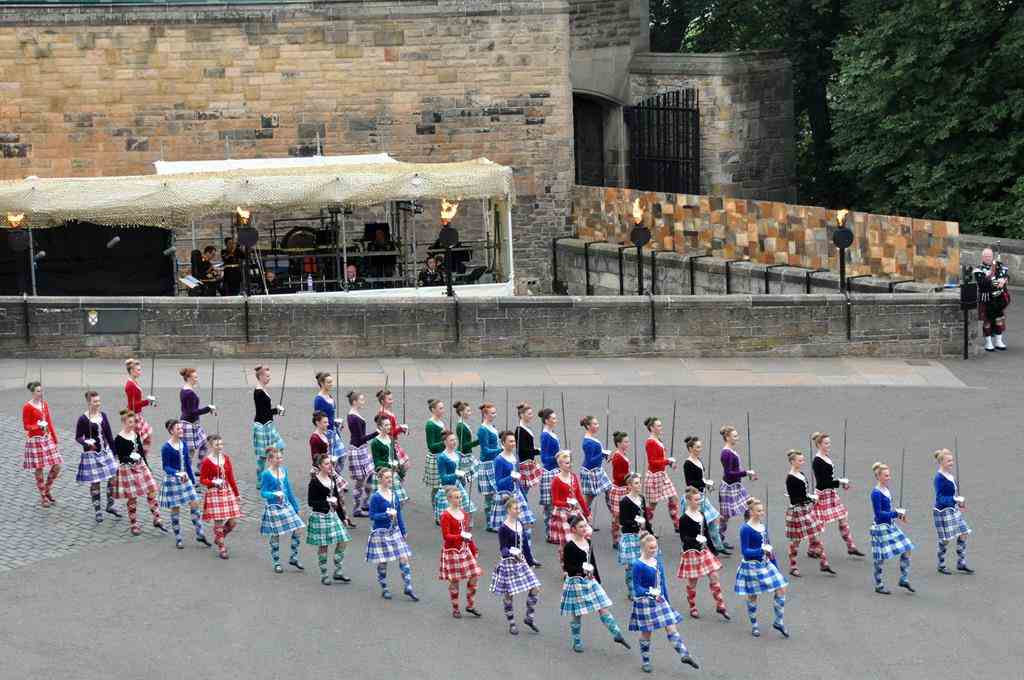
The Scottish Parliament Building.
From the outset, the building and its construction have been controversial.
The choices of location, architect, design, and construction company were all criticised by politicians, the media and the Scottish public.
Scheduled to open in 2001, it did so in 2004, more than three years late with an estimated final cost of £414 million,
many times higher than initial estimates of between £10m and £40m.
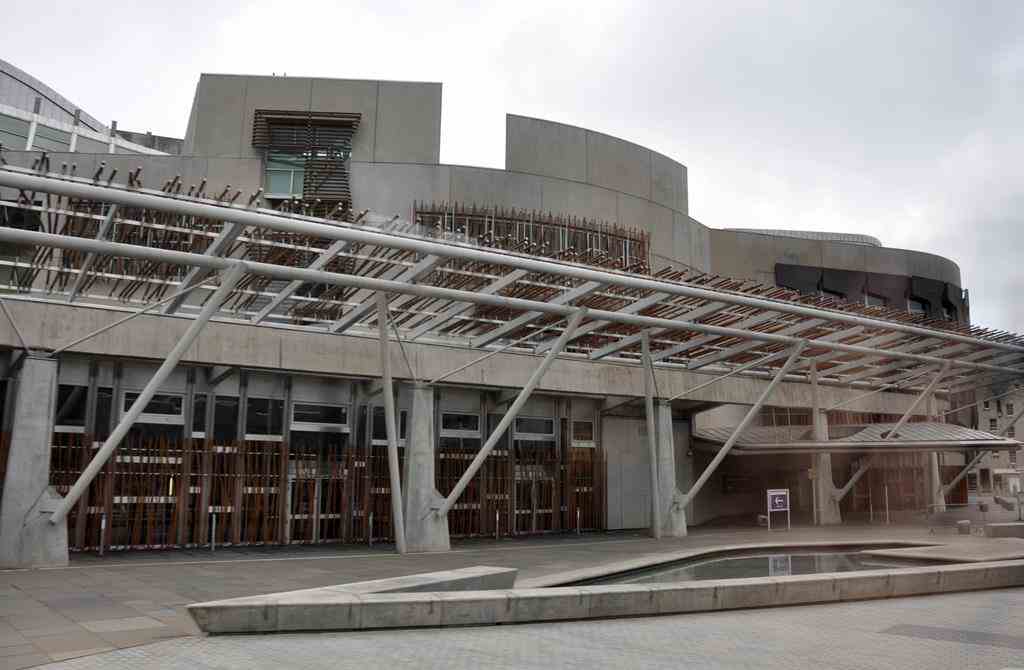
The Roxburgh Hotel, where we stayed in Edinburgh.
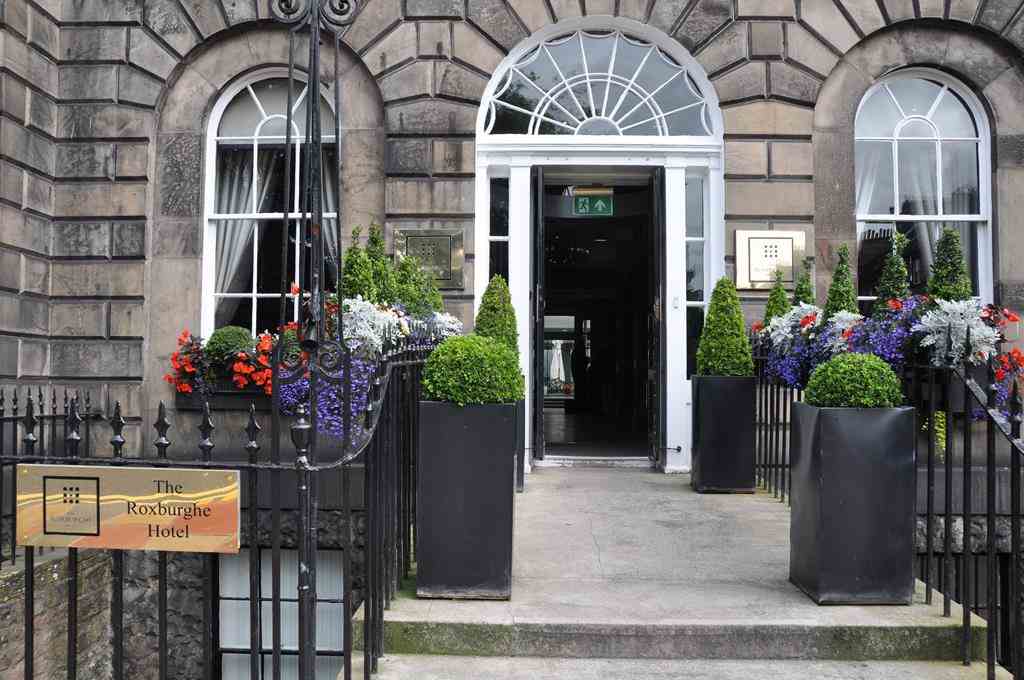
St. Andrews
St Andrews is also known worldwide as the "home of golf".
This is in part because the Royal and Ancient Golf Club, founded in 1754,
exercises legislative authority over the game worldwide (except in the United States and Mexico),
and also because the famous links (acquired by the town in 1894) is the most frequent venue for The British Open Championship,
the oldest of golf's four major championships.
Visitors travel to St Andrews in great numbers for several courses ranked amongst the finest in the world.
The exact origins of the sport of golf are unclear.
It is thought that the modern game of golf originated in the High Middle Ages of Scotland (800 -1260AD).
The first golf courses and clubs were established in the country.The first written rules originated in Scotland,
as did the establishment of the 18 hole course.
The first tournament structures developed and competitions were held between various burghs.
The modern game was spread by Scots to the rest of the world.
The Old Links at Musselburgh Racecourse is claimed to be the oldest playing golf course in the world.
Evidence has shown that golf was played on Musselburgh Links in 1672, although Mary, Queen of Scots reputedly played there even earlier in 1567.
Golf courses have not always consisted of eighteen holes. The St Andrews Links occupy a narrow strip of land along the sea-shore.
As early as the 15th century, golfers at St Andrews established a trench through the undulating terrain,
playing to holes whose locations were dictated by topography.
The course that emerged featured eleven holes, laid out end to end from the clubhouse to the far end of the property.
One played the holes out, turned around, and played the holes in, for a total of 22 holes.
In 1764, several of the holes were deemed too short, and therefore combined.
The number was thereby reduced from 11 to nine, so that a complete round of the links comprised 18 holes.
Due to the status of St Andrews as the 'home of golf', other courses followed suit and the 18 hole course
became the standard which has remained to the present day.
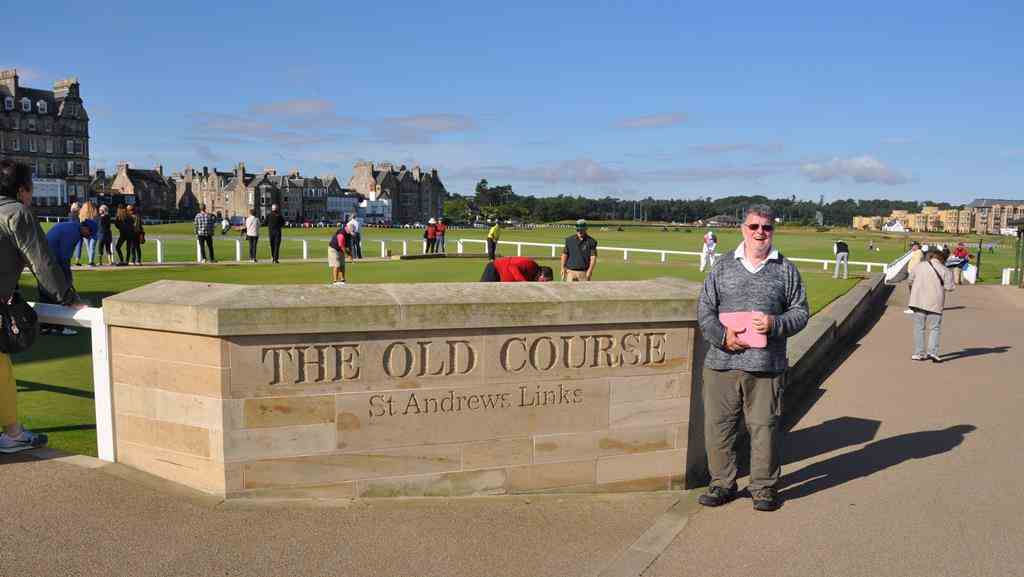
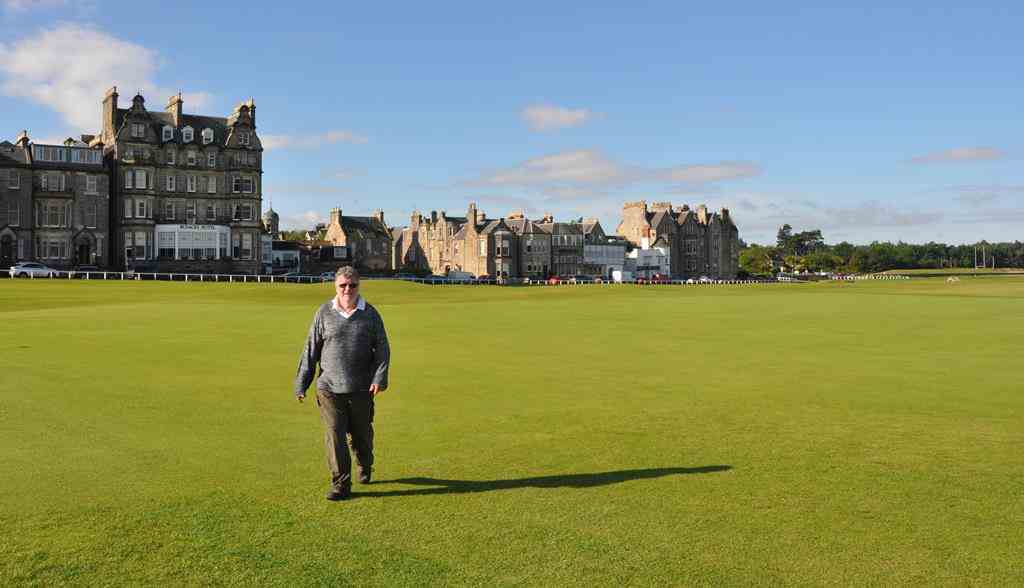
A salmon ladder at Pitlochry Dam.

Blair Castle
Blair Castle stands in its grounds near the village of Blair Atholl in Perthshire in Scotland.
It is the ancestral home of the Clan Murray, and was historically the seat of their chief, the Duke of Atholl, though the current (12th) Duke,
Bruce Murray, lives in South Africa.
The castle stands in Glen Garry, and commands a strategic position on the main route (now the A9 road) through the central Scottish Highlands.
Parts of the building date from the 13th century.
The holder of the title, Duke of Atholl, also commands the only legal private army in Europe,
the Atholl Highlanders, which is headquartered at Blair Castle.

On our way to Inverness we visited a farm where they had at least 15 Border Collies, incuding some pups.
The farmer gave us a demonstration of the dogs rounding up a group of sheep and he used hand-shears to shear a sheep.
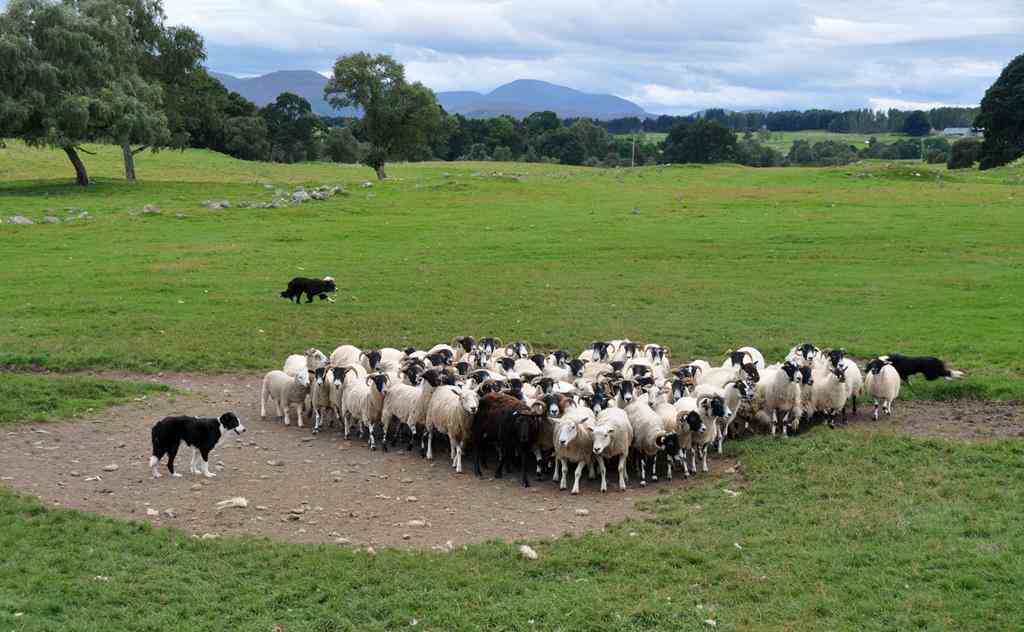
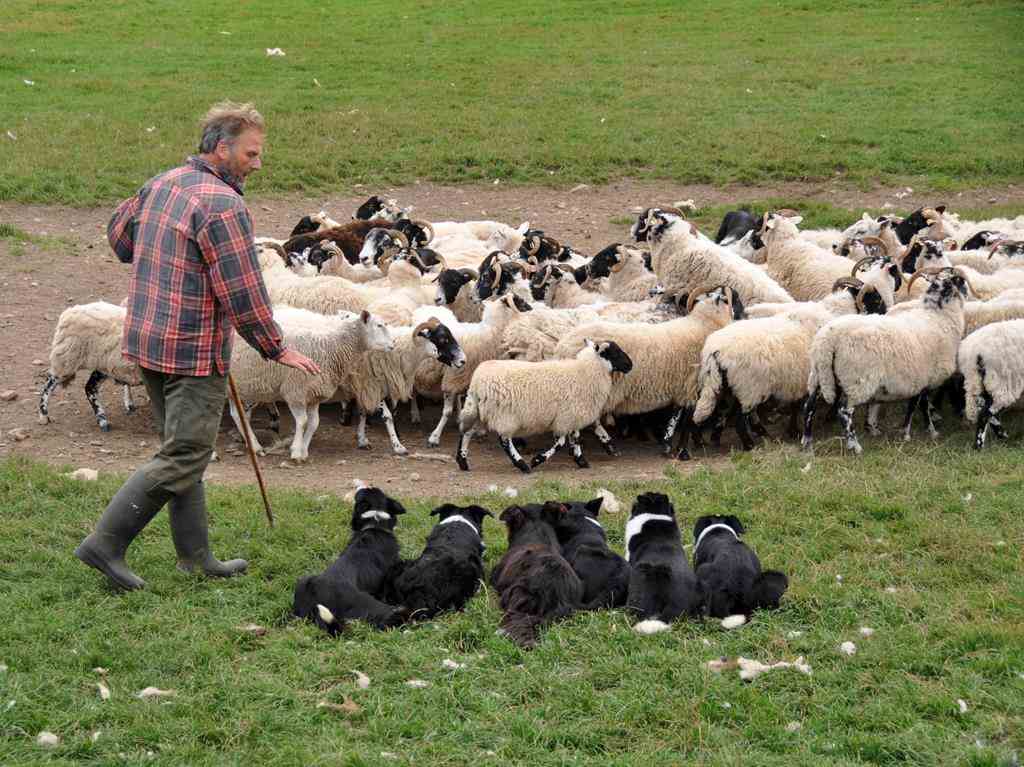
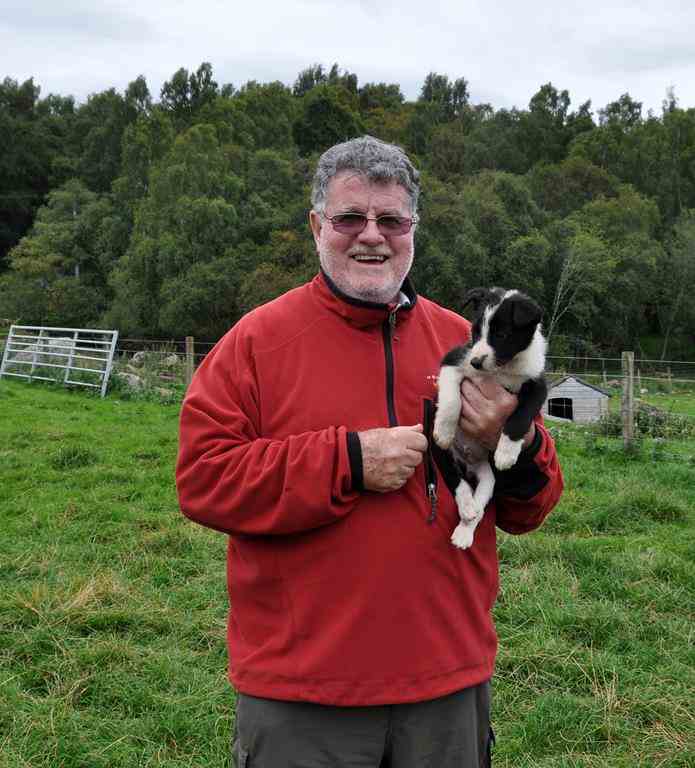
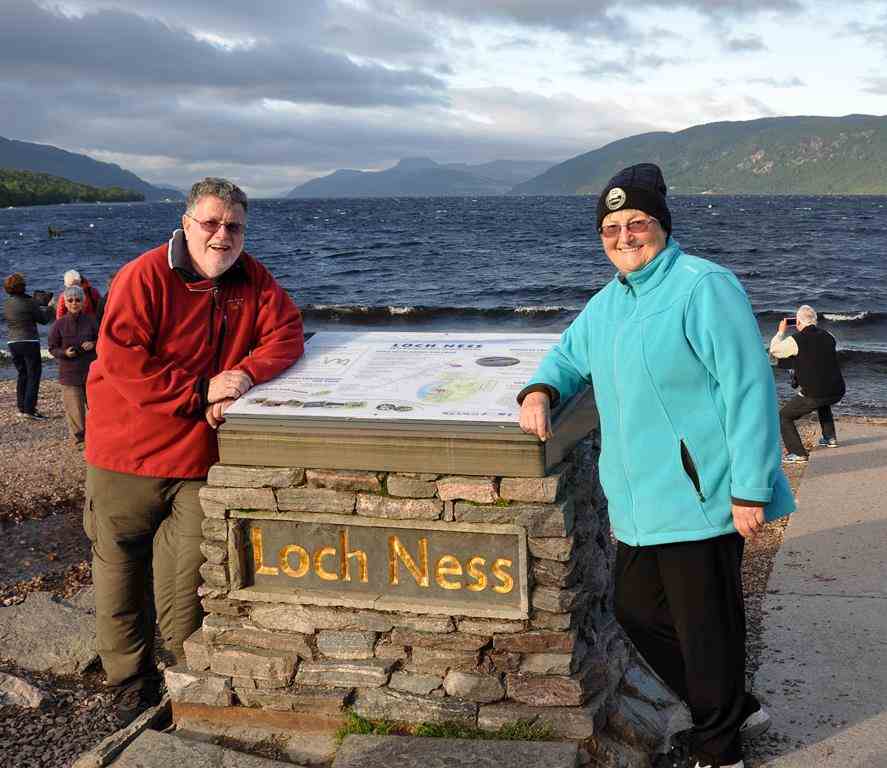

A highland cow
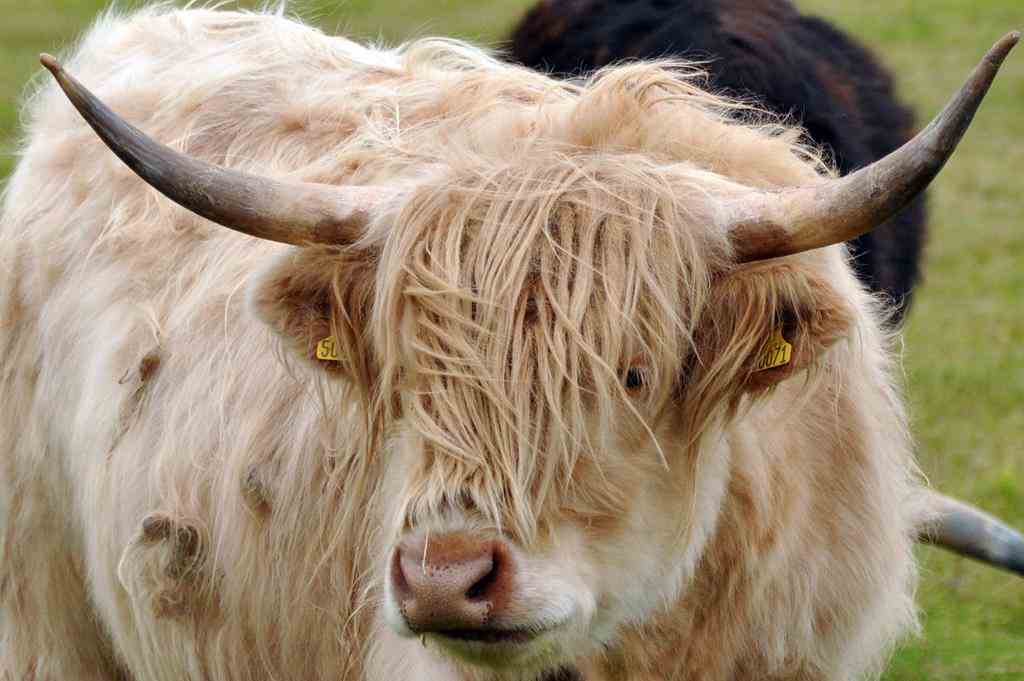
Dunnet Head - The northernmost point of Great Britain
John o'Groats is the northernmost settlement in Great Britain and Dunnet Head is the northernmost point.
Dunnet Head is about 18km west-northwest of John o' Groats.
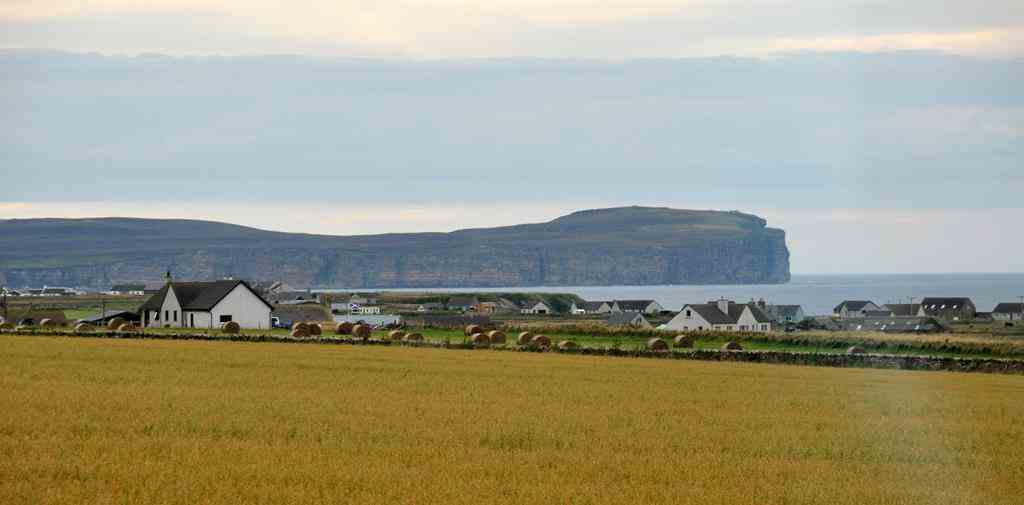
The Castle of Mey
The Castle of Mey is located in Caithness, on the north coast of Scotland, between John o' Groats and Dunnet Head.
In fine weather there are views from the castle north to the Orkney Islands.
The Castle of Mey was built between 1566 and 1572, possibly on the site of an earlier fortification.
The Castle's name was changed to Barrogill, and it was extended several times, in the 17th and 18th centuries, and again in 1821
when Tudor Gothic style alterations were made.
The castle was in a semi-derelict state when, in 1952, it was purchased by Queen Elizabeth The Queen Mother,
the widow of King George VI who had died earlier in the year.
The Queen Mother set about restoring the castle for use as a holiday home, removing some of the 19th-century additions,
and reinstating the Castle's original name.
She regularly visited it in August and October from 1955 until her death in March 2002, the last visit being in October 2001.
In July 1996 The Queen Mother made the property over to the Queen Elizabeth Castle of Mey Trust,
which has opened the castle and garden to the public regularly since her death.

The village of John o'Groats is the most northerly settlement in Great Britain.
It is 1,410km to Land's End in Cornwall, the most southerly Point.
John o' Groats is 1,110km from London, 450km from Edinburgh, 9.7km from the Orkney Isles and 3,500km from the North Pole.
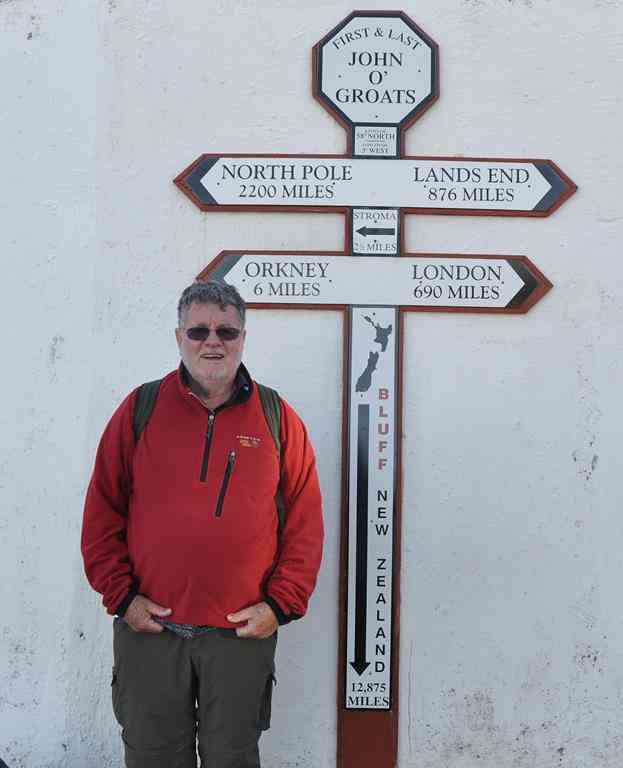
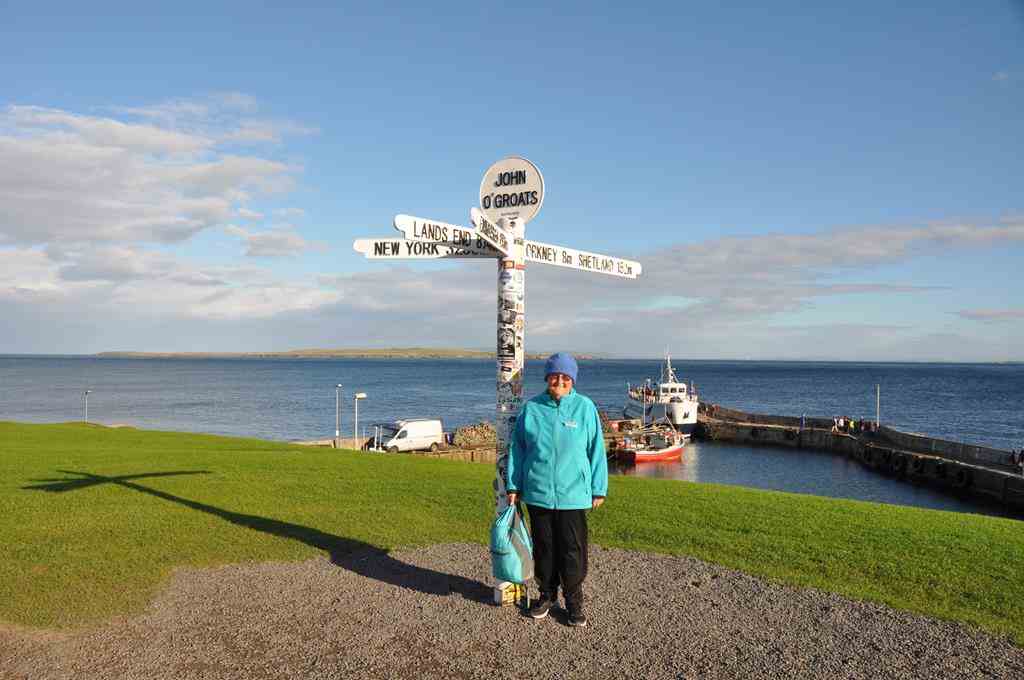
Orkney, also known as the Orkney Islands, is an archipelago 16 kilometres north of the coast of Scotland
and comprises approximately 70 islands, of which 20 are inhabited.
A form of the name dates to the pre-Roman era and the islands have been inhabited for at least 8500 years,
originally occupied by Mesolithic and Neolithic tribes and then by the Picts.
Orkney was invaded and forcibly annexed by Norway in 875 and settled by the Norse.
The Scottish Parliament then re-annexed the earldom to the Scottish Crown in 1472,
following the failed payment of a dowry for James III's bride Margaret of Denmark.
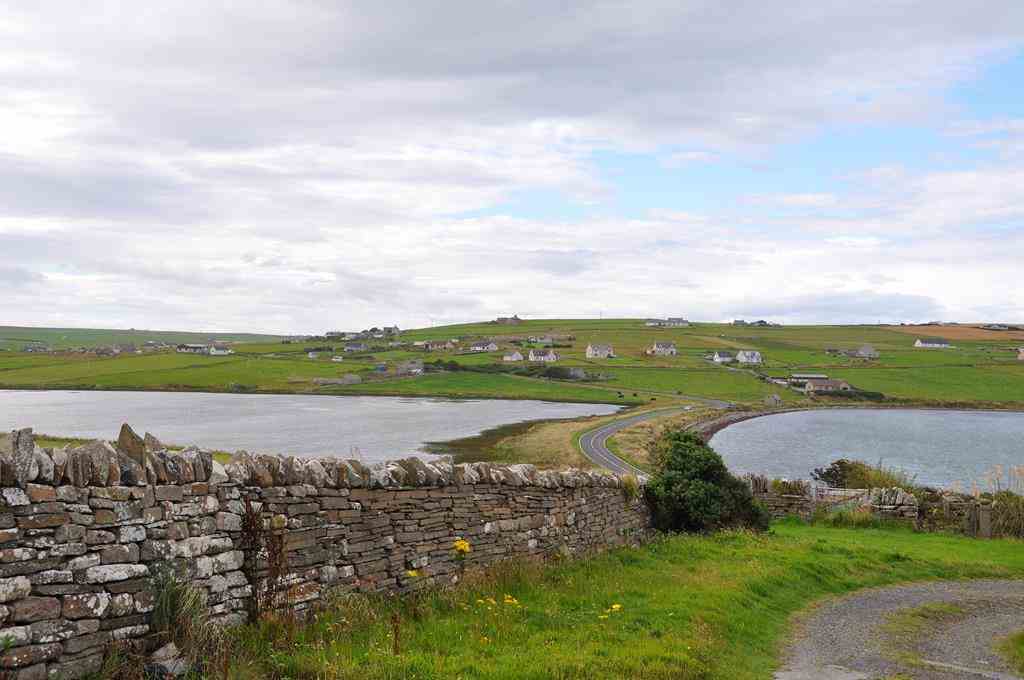
Ring of Brodgar
The Ring of Brodgar is a Neolithic henge and stone circle on the Mainland, the largest island in Orkney.
The ring of stones stands on a small isthmus between the Lochs of Stenness and Harray.
It is generally thought to have been erected between 2500 BC and 2000 BC.
The stone circle is 104m in diameter, and originally comprised up to 60 stones,
of which only 27 remained standing at the end of the 20th century.
The stones are set within a circular ditch up to 3m deep, 9m wide and 380m in circumference
that was carved out of the solid sandstone bedrock by the ancient residents.
Technically, this ditch does not constitute a true henge as there is no sign of an encircling bank of earth and rock.
The exact purpose of the Ring of Brodgar is not known.

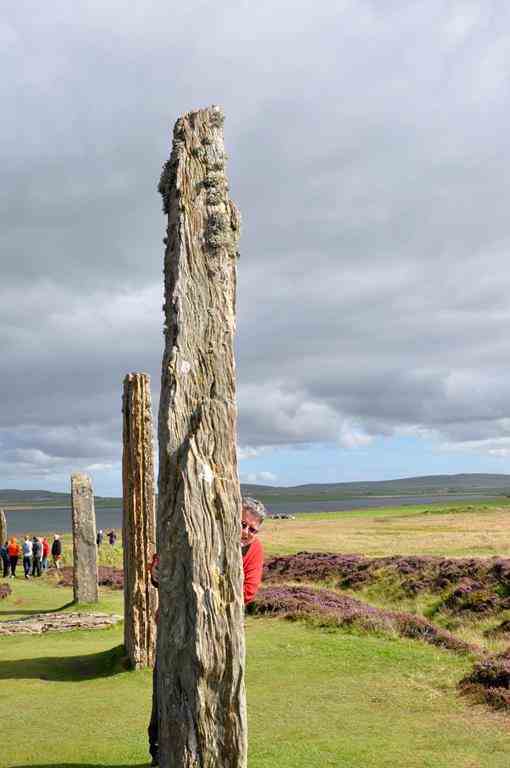
Skara Brae
In the winter of 1850, a severe storm hit Scotland, causing widespread damage and over 200 deaths.
In the Bay of Skaill, the storm stripped the earth from a large irregular knoll known as "Skerrabra".
When the storm cleared, local villagers found the outline of a village, consisting of a number of small houses without roofs.
Now called Skara Brae, it is a cluster of 8 houses and was occupied from roughly 3180 BC to about 2500 BC.
It is Europe's most complete Neolithic village.

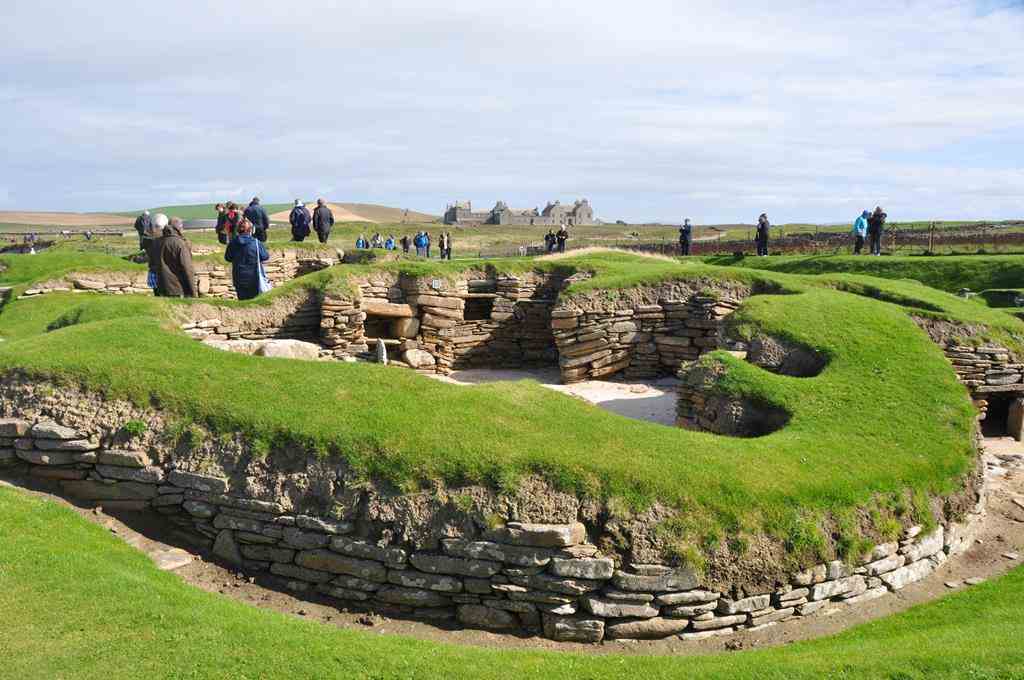
The Isle of Skye lies off the west coast of Scotland,
The island's peninsulas radiate from a mountainous centre dominated by the Cuillins,
the rocky slopes of which provide some of the most dramatic mountain scenery in the country.
The climate is mild, wet and windy.
Tranquil scenes near our hotel at Broadford on the Isle of Skye.
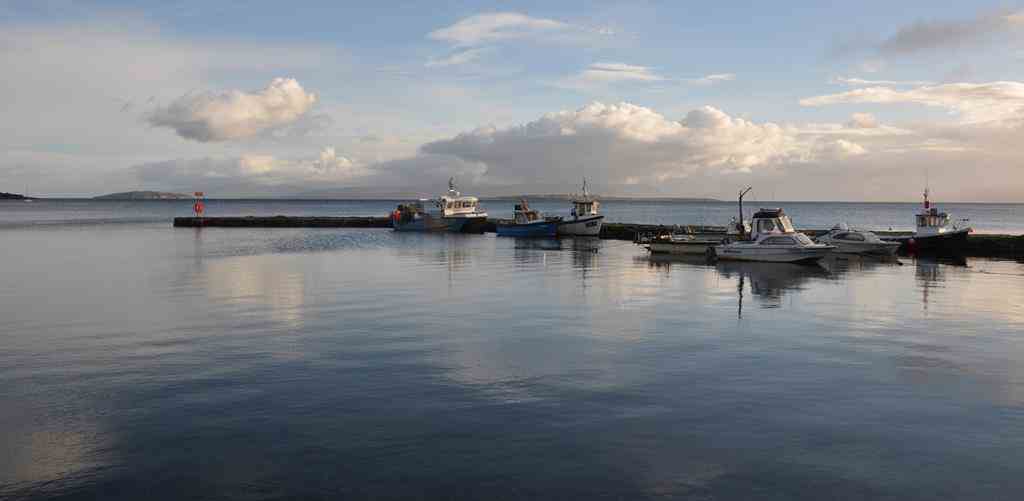
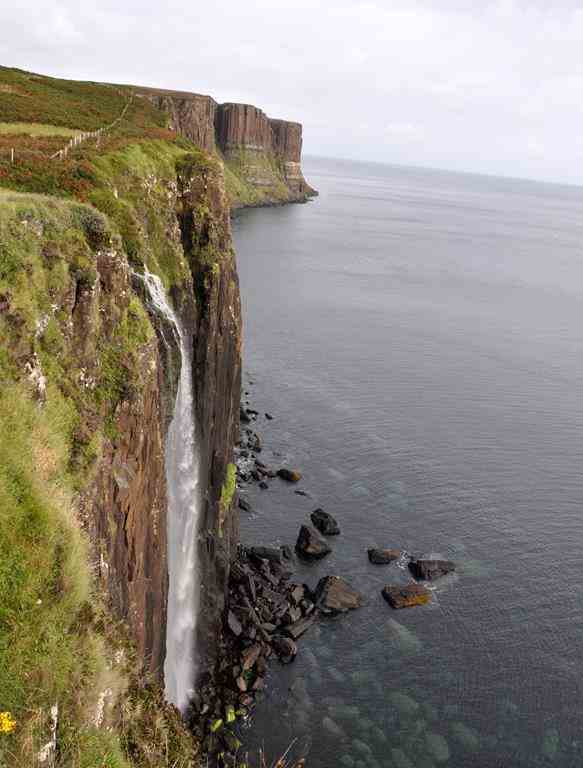
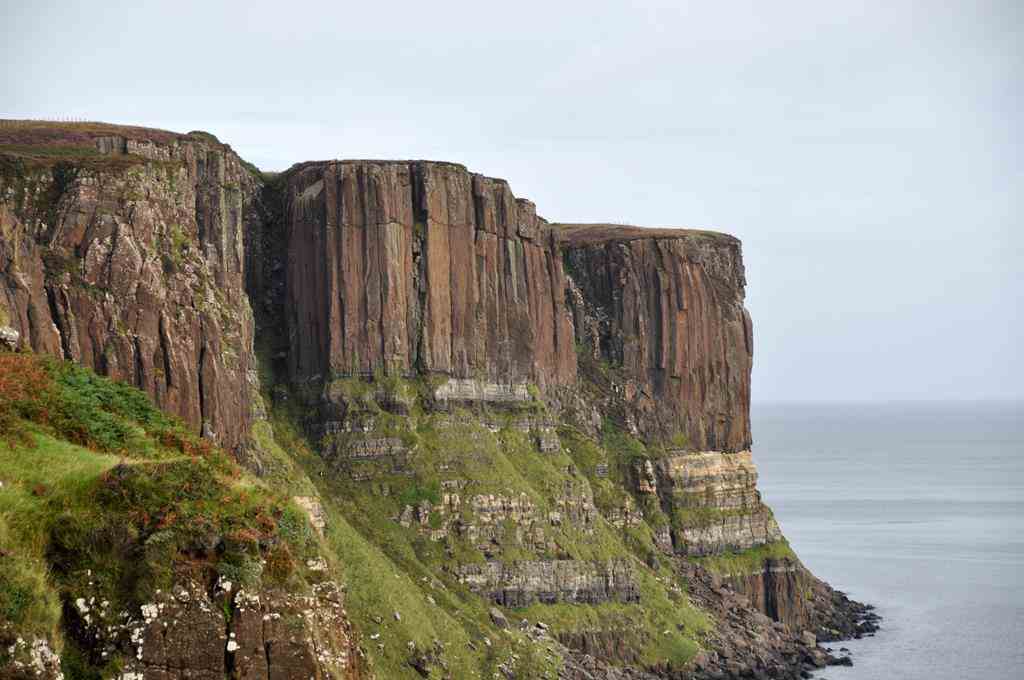
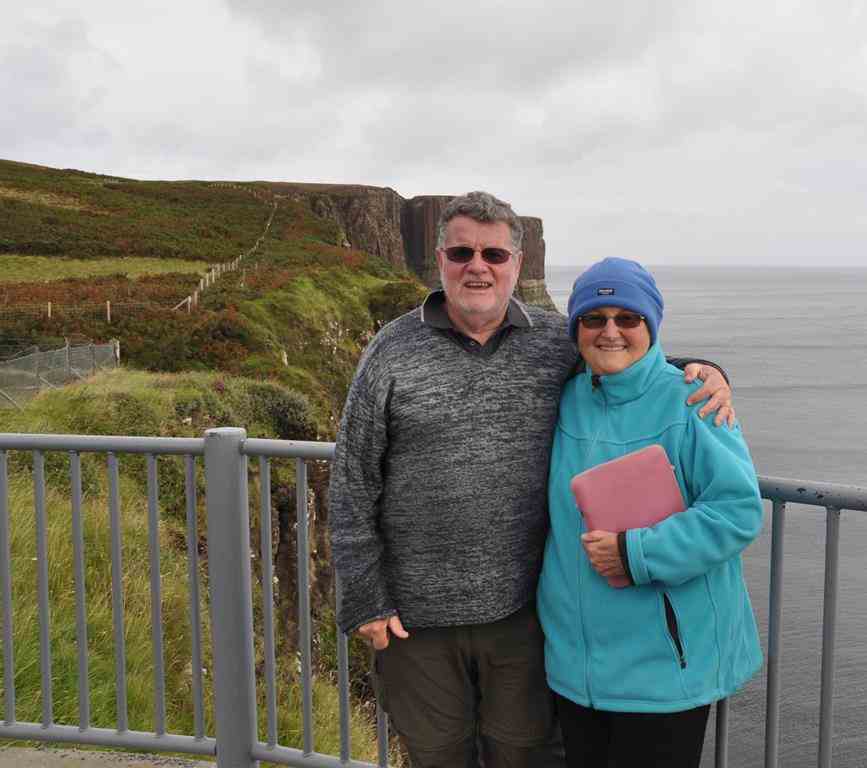
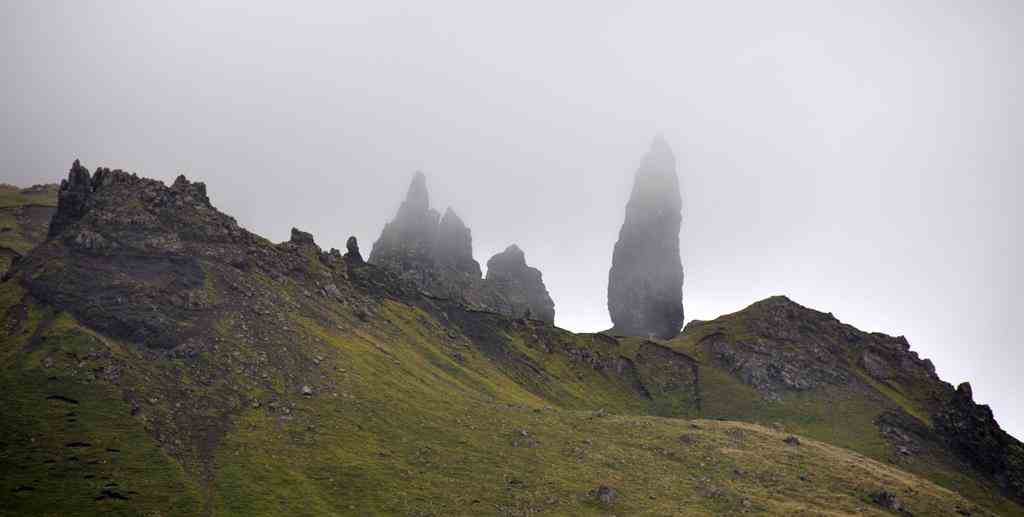
Portree is the largest town on the Isle of Skye.
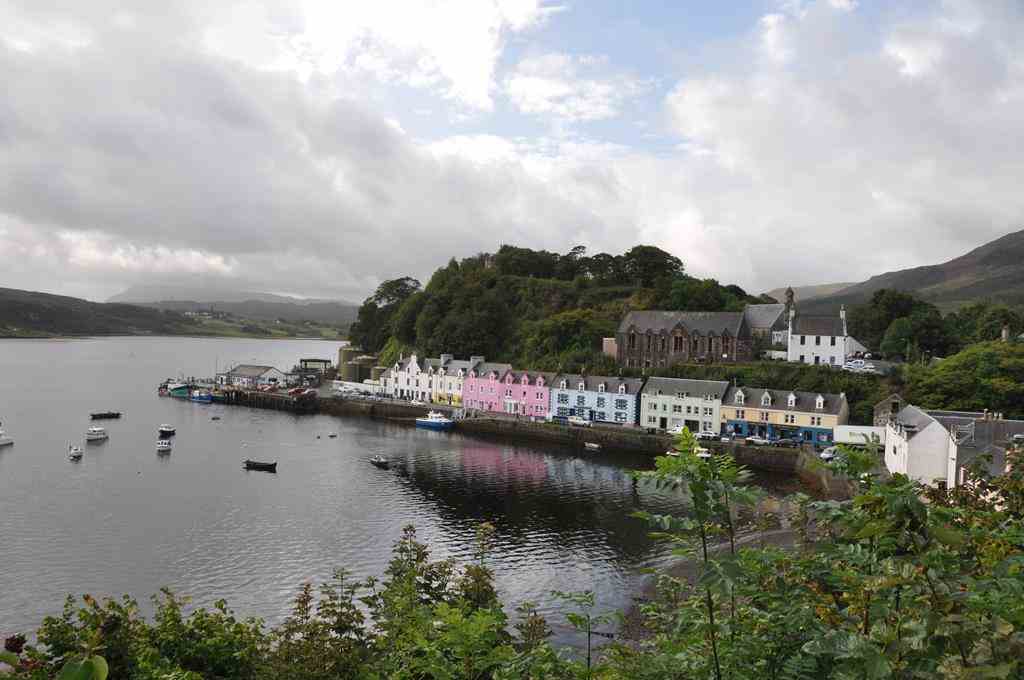
Eilean Donan Castle
Eilean Donan is a small tidal island where three lochs meet, Loch Duich, Loch Long and Loch Alsh, in the western Highlands of Scotland.
A picturesque castle that frequently appears in photographs, film and television dominates the island.
Since the castle's restoration in the early 20th century, a footbridge has connected the island to the mainland.
Eilean Donan, which means simply "island of Donnán", is named after Donnán of Eigg, a Celtic saint martyred in 617.
Donnán is said to have established a church on the island, though no trace of this remain.
The castle was founded in the thirteenth century, and became a stronghold of the Clan Mackenzie and their allies the Clan Macrae.
In the early eighteenth century, the Mackenzies' involvement in the Jacobite rebellions
led in 1719 to the castle's destruction by government ships.
Twentieth-century reconstruction of the ruins produced the present buildings.
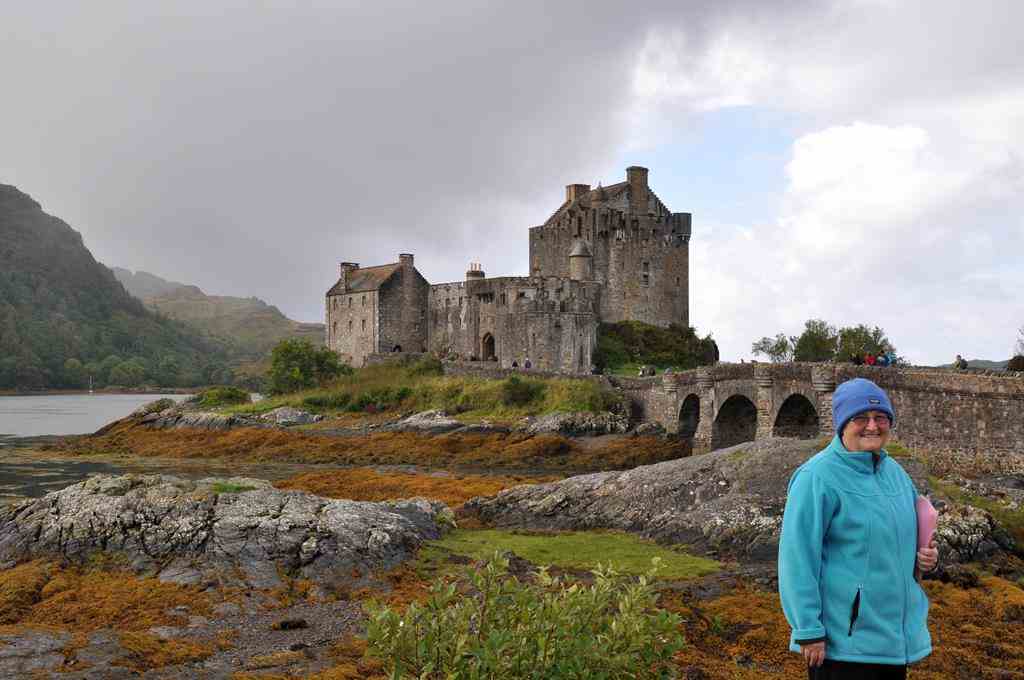
An alehouse in Fort William.
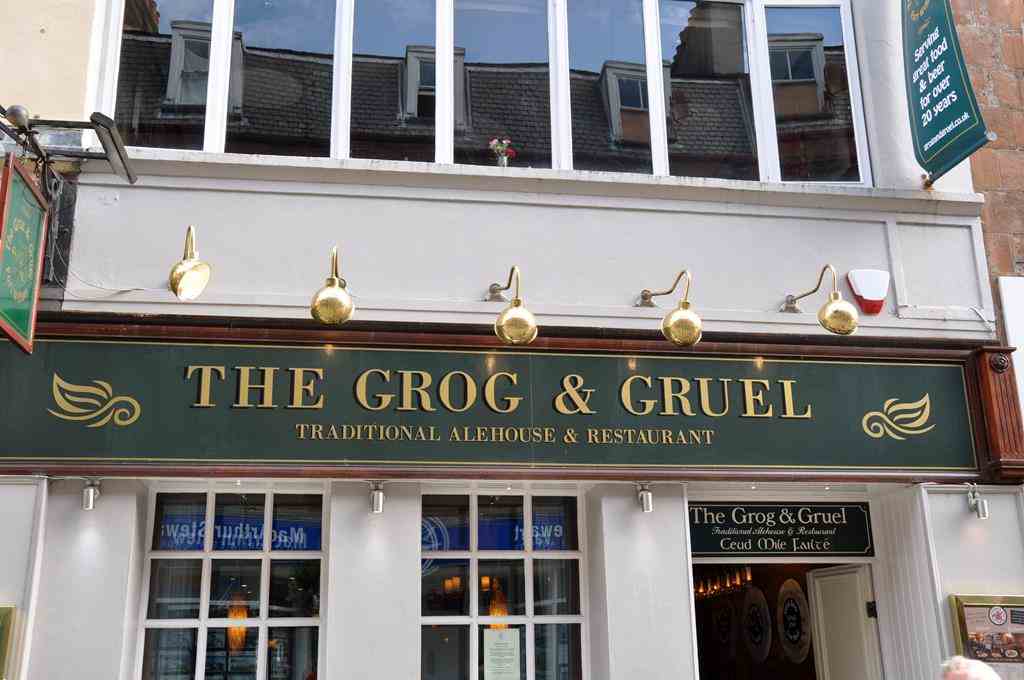
Valley of Glencoe
The valley is the site of the Massacre of Glencoe in 1692, in which members of the Clan MacDonald of Glencoe
were killed by forces acting on behalf of the government of King William III following the Glorious Revolution.
The Glorious Revolution, was the overthrow of King James II of England (James VII of Scotland) by a union of English Parliamentarians with William of Orange of Holland. William's successful invasion of England with a Dutch fleet and army led to his ascending of the English throne
as William III of England jointly with his wife Mary II of England, James's daughter.
The Earl of Argyll's Regiment (government troops) which consisted of approximately 120 men, were billeted on the MacDonalds in Glencoe,
who received them in the hospitable tradition of the Highlands.
38 MacDonalds from the Clan MacDonald of Glencoe were killed by the guests who had accepted their hospitality,
on the grounds that the MacDonalds had not been prompt in pledging allegiance to the new monarchs, William and Mary.
Another forty women and children died of exposure after their homes were burned.

A Scottish Piper playing before a wedding at Glosgow Cathedral.
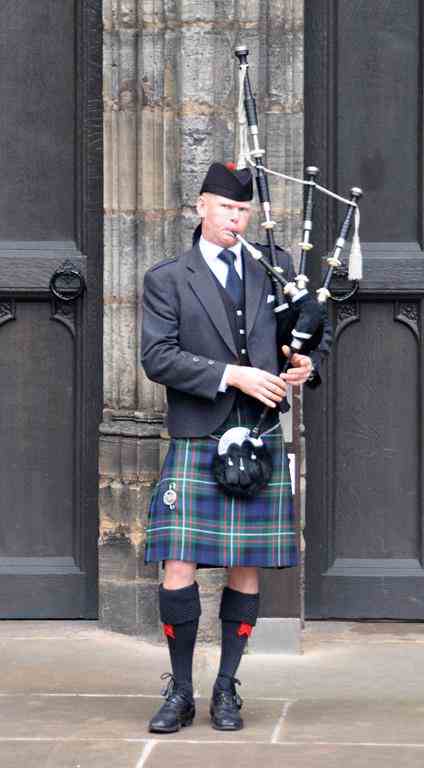
Glasgow Cathedral
The title cathedral is honorific and historic, dating from the period before the Scottish Reformation
and its former status as the Roman Catholic mother church of the Archdiocese of Glasgow.
It now belongs to the Church of Scotland (Presbyterians).
It is also called the High Kirk of Glasgow or St Kentigern's or St Mungo's Cathedral.
The history of the cathedral is linked with that of the city, and is allegedly located
where the patron saint of Glasgow, Saint Mungo, built his church.
Dating from the late 12th century onwards, the building is a superb example of Scottish Gothic architecture.
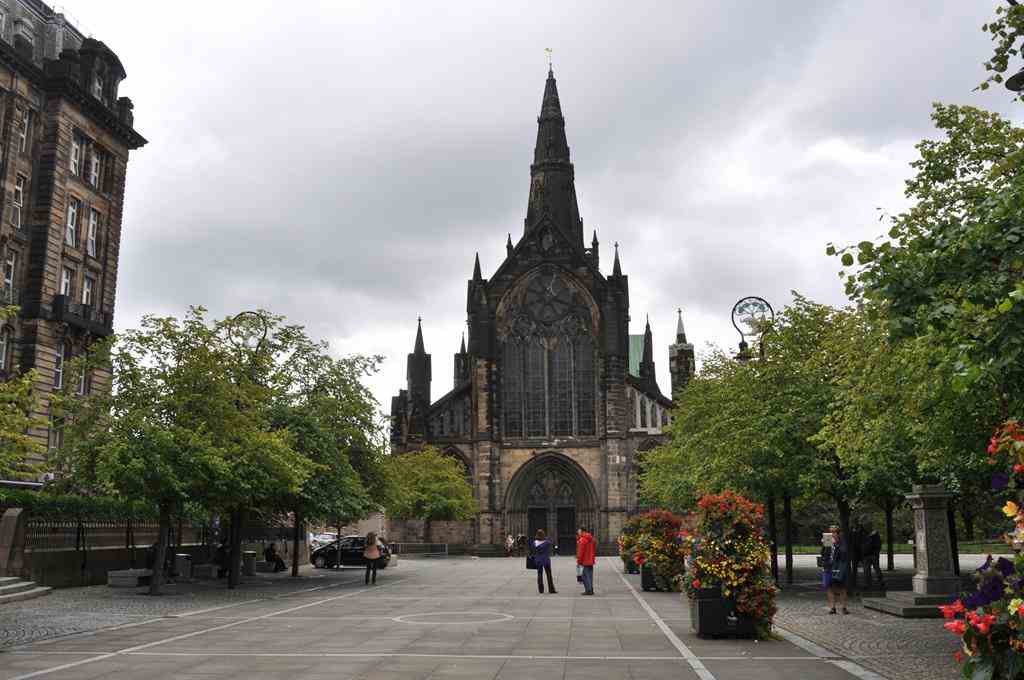
We flew from Glasgow to London. We spent a night in an airport hotel near Heathrow.
The next morning we had a 6½-hour Emirates A380 flight to Dubai.
We spent a leisurely 2 nights in Dubai before the 12¼-hour Emirates A380 flight to Melbourne.
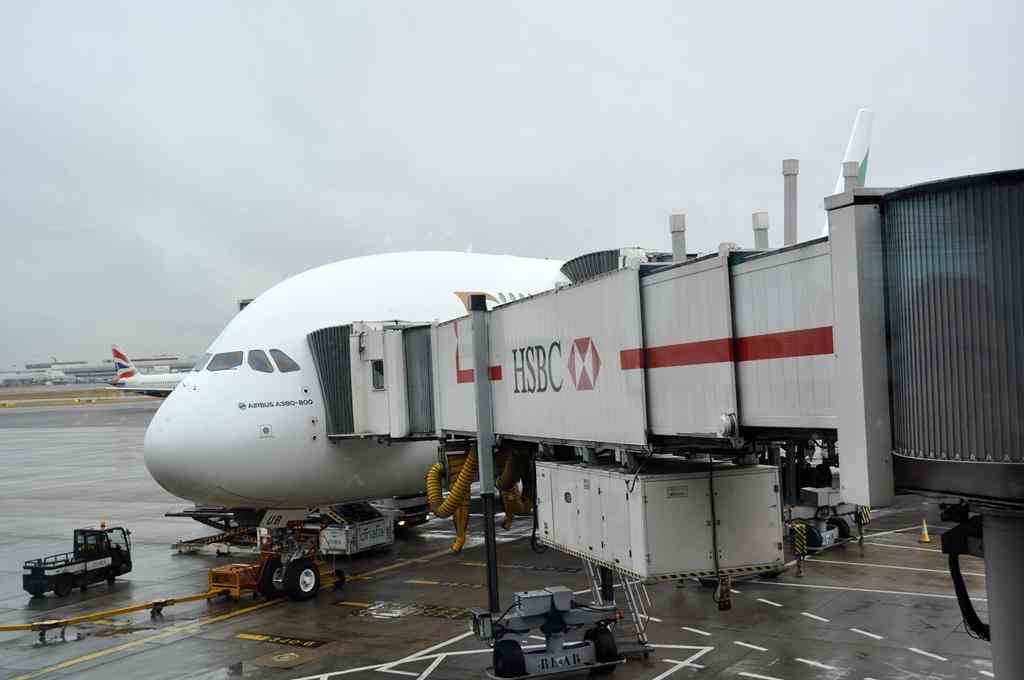
All good things have to come to an end unfortunately.
It was a great 7-week holiday including 22 in the UK.
We saw lots of fantastic new sights and tidied up a lot of places
that have been on our wish-list for a long time.
In 2016 we spent 22 days in the UK on our 49-day Melbourne - Dubai - Paris - World War 1 Western Front Battlefields -
Portugal - England - Wales - Scotland - Dubai - Melbourne trip.
We flew from Porto in Portugal to Stansted Airport near London.
We stayed overnight at an airport hotel and travelled by train to London the next day.
London
The London Eye
When erected in 1999, the London Eye on the south bank of the River Thames, was the world's tallest Ferris wheel.
Also known as the Millennium Wheel, it was originally part-owned by British Airways.
The structure is 135m tall and the wheel has a diameter of 120m. Its height was surpassed by the 158 tall Star of Nanchang in 2006,
the 165m tall Singapore Flyer in 2008, and the 168m High Roller in Las Vegas in 2014.
Supported by an A-frame on one side only, unlike the taller Nanchang and Singapore wheels,
the Eye is described by its operators as "the world's tallest cantilevered observation wheel".
It is the most popular paid tourist attraction in the United Kingdom with over 3.75 million visitors annually.
Each of the 32 ovoidal capsules weighs 10 tonnes and can carry 25 people.
It does not usually stop to take on passengers; the rotation rate is slow enough to allow passengers
to walk on and off the moving capsules at ground level.
The 30-min ride cost us $44 each. Queuing was not too bad, but pedestrian traffic over the Westminster Bridge
and along the river bank was diabolical.
Royal Albert Hall
Seating up to 5,272 patrons, The Royal Albert Hall in South Kensington, London, has held the Proms concerts annually each summer since 1941.
The Hall was originally supposed to have been called the Central Hall of Arts and Sciences,
but the name was changed to the Royal Albert Hall of Arts and Sciences by Queen Victoria upon laying the Hall's foundation stone in 1867,
in memory of her husband consort, Prince Albert who had died six years earlier.
We had a tour of the hall.
We went on a 9-day tour of England, Scotland and Wales.
(London - Stratford - York - Edinburgh - Glasgow - Lake District - Cardiff - Cornwall - London)
The Cotswolds
Stratford-on-Avon
The Royal Shakespeare Theatre opened in 1932 on the site adjacent to the original Shakespeare Memorial Theatre (opened in 1879),
which had been destroyed by fire in March 1926. It seats 1040 patrons.
The architect was Elisabeth Scott. The theatre became the first important work erected in the UK from the designs of a woman architect.
York
York is a historic walled city about 280km north of London.
The city was founded by the Romans as Eboracum in 71 AD.
York grew as a major wool trading centre and in the 19th century,
York became a hub of the railway network and a confectionery manufacturing centre.
York Minster
The Cathedral, commonly known as York Minster, is one of the largest of its kind in Northern Europe.
The minster is the seat of the Archbishop of York, the second-highest office of the Church of England.
The title "minster" is attributed to churches established in the Anglo-Saxon period as missionary teaching churches.
It was too late in the day for a tour inside the cathedral.
Clifford's Tower
Hadrian's Wall
Scotland
Edinburgh
A night at the Edinburgh Tattoo
The William Wallace monument stands on the Abbey Craig, a volcanic crag above Cambuskenneth Abbey, from which Wallace
was said to have watched the gathering of the army of King Edward I of England, just before the Battle of Stirling Bridge in 1297.
William Wallace (died 1305) was a Scottish knight who became one of the main leaders during the Wars of Scottish Independence.
Along with Andrew Moray, Wallace defeated an English army at the Battle of Stirling Bridge in September 1297.
He was appointed Guardian of Scotland and served until his defeat at the Battle of Falkirk in July 1298.
In August 1305, Wallace was captured in Robroyston, near Glasgow, and handed over to King Edward I of England,
who had him hanged, drawn, and quartered for high treason and crimes against English civilians.
Back to England - The Lakes District
"I Wandered Lonely as a Cloud" (also commonly known as "Daffodils") is Wordsworth's most famous work.
The inspiration for the poem came from a walk Wordsworth took with his sister Dorothy around Glencoyne Bay,
Ullswater, in the Lake District in 1802.
Wordworth's grave at Grasmere.
Wales
Cardiff
Cardiff Castle
Cardiff Castle, a medieval castle and Victorian Gothic revival mansion is located in the city centre of Cardiff, Wales.
The original motte and bailey castle was built in the late 11th century by Norman invaders on top of a 3rd-century Roman fort.
The castle was commissioned by either William the Conqueror or by Robert Fitzhamon, and formed the heart of the medieval town of Cardiff.
In the 12th century the castle began to be rebuilt in stone, probably by Robert of Gloucester,
with a shell keep and substantial defensive walls being erected.
Further work was conducted by Richard de Clare, 6th Earl of Gloucester in the second half of the 13th century.
Cardiff Castle was repeatedly involved in the conflicts between the Anglo-Normans and the Welsh, being attacked several times in the 12th century,
and stormed in 1404 during the revolt of Owain Glyndŵr.
In the mid-18th century, Cardiff Castle passed into the hands of the Marquesses of Bute. John Stuart,
the first Marquess, employed Capability Brown and Henry Holland to renovate the main range, turning it into a Georgian mansion.
During the first half of the 19th century the family became extremely wealthy as a result of the growth of the coal industry in Glamorgan.
The third Marquess, John Crichton-Stuart, used this wealth to back an extensive programme of renovations under William Burges.
Burges remodelled the castle in a Gothic revival style, lavishing money and attention on the main range.
The resulting interior designs are considered to be amongst "the most magnificent that the gothic revival ever achieved".
The Keep at Cardiff Castle
Bath
Devon
Plymouth Hoe is perhaps best known for the probably apocryphal story that Sir Francis Drake played his famous game of bowls here in 1588
while waiting for the tide to change before sailing out with the English fleet to engage with the Spanish Armada.
Cornwall
Dartmoor Moors in southern Devon
And so back to London for 2 nights before we flew to Edinburgh for a 9-day tour of Scotland.
(Edinburgh - St. Andrews - Inverness - Thurso - John O'Goats - Orkney Islands
- Isle of Skye - Fort William - Ballachulish - Loch Lomand - Glasgow)
Edinburgh Castle
This time an afternoon at the Edinburgh Tattoo.
The Scottish Parliament Building.
From the outset, the building and its construction have been controversial.
The choices of location, architect, design, and construction company were all criticised by politicians, the media and the Scottish public.
Scheduled to open in 2001, it did so in 2004, more than three years late with an estimated final cost of £414 million,
many times higher than initial estimates of between £10m and £40m.
The Roxburgh Hotel, where we stayed in Edinburgh.
St. Andrews
St Andrews is also known worldwide as the "home of golf".
This is in part because the Royal and Ancient Golf Club, founded in 1754,
exercises legislative authority over the game worldwide (except in the United States and Mexico),
and also because the famous links (acquired by the town in 1894) is the most frequent venue for The British Open Championship,
the oldest of golf's four major championships.
Visitors travel to St Andrews in great numbers for several courses ranked amongst the finest in the world.
The exact origins of the sport of golf are unclear.
It is thought that the modern game of golf originated in the High Middle Ages of Scotland (800 -1260AD).
The first golf courses and clubs were established in the country.The first written rules originated in Scotland,
as did the establishment of the 18 hole course.
The first tournament structures developed and competitions were held between various burghs.
The modern game was spread by Scots to the rest of the world.
The Old Links at Musselburgh Racecourse is claimed to be the oldest playing golf course in the world.
Evidence has shown that golf was played on Musselburgh Links in 1672, although Mary, Queen of Scots reputedly played there even earlier in 1567.
Golf courses have not always consisted of eighteen holes. The St Andrews Links occupy a narrow strip of land along the sea-shore.
As early as the 15th century, golfers at St Andrews established a trench through the undulating terrain,
playing to holes whose locations were dictated by topography.
The course that emerged featured eleven holes, laid out end to end from the clubhouse to the far end of the property.
One played the holes out, turned around, and played the holes in, for a total of 22 holes.
In 1764, several of the holes were deemed too short, and therefore combined.
The number was thereby reduced from 11 to nine, so that a complete round of the links comprised 18 holes.
Due to the status of St Andrews as the 'home of golf', other courses followed suit and the 18 hole course
became the standard which has remained to the present day.
A salmon ladder at Pitlochry Dam.
Blair Castle
Blair Castle stands in its grounds near the village of Blair Atholl in Perthshire in Scotland.
It is the ancestral home of the Clan Murray, and was historically the seat of their chief, the Duke of Atholl, though the current (12th) Duke,
Bruce Murray, lives in South Africa.
The castle stands in Glen Garry, and commands a strategic position on the main route (now the A9 road) through the central Scottish Highlands.
Parts of the building date from the 13th century.
The holder of the title, Duke of Atholl, also commands the only legal private army in Europe,
the Atholl Highlanders, which is headquartered at Blair Castle.
On our way to Inverness we visited a farm where they had at least 15 Border Collies, incuding some pups.
The farmer gave us a demonstration of the dogs rounding up a group of sheep and he used hand-shears to shear a sheep.
A highland cow
Dunnet Head - The northernmost point of Great Britain
John o'Groats is the northernmost settlement in Great Britain and Dunnet Head is the northernmost point.
Dunnet Head is about 18km west-northwest of John o' Groats.
The Castle of Mey
The Castle of Mey is located in Caithness, on the north coast of Scotland, between John o' Groats and Dunnet Head.
In fine weather there are views from the castle north to the Orkney Islands.
The Castle of Mey was built between 1566 and 1572, possibly on the site of an earlier fortification.
The Castle's name was changed to Barrogill, and it was extended several times, in the 17th and 18th centuries, and again in 1821
when Tudor Gothic style alterations were made.
The castle was in a semi-derelict state when, in 1952, it was purchased by Queen Elizabeth The Queen Mother,
the widow of King George VI who had died earlier in the year.
The Queen Mother set about restoring the castle for use as a holiday home, removing some of the 19th-century additions,
and reinstating the Castle's original name.
She regularly visited it in August and October from 1955 until her death in March 2002, the last visit being in October 2001.
In July 1996 The Queen Mother made the property over to the Queen Elizabeth Castle of Mey Trust,
which has opened the castle and garden to the public regularly since her death.
The village of John o'Groats is the most northerly settlement in Great Britain.
It is 1,410km to Land's End in Cornwall, the most southerly Point.
John o' Groats is 1,110km from London, 450km from Edinburgh, 9.7km from the Orkney Isles and 3,500km from the North Pole.
Orkney, also known as the Orkney Islands, is an archipelago 16 kilometres north of the coast of Scotland
and comprises approximately 70 islands, of which 20 are inhabited.
A form of the name dates to the pre-Roman era and the islands have been inhabited for at least 8500 years,
originally occupied by Mesolithic and Neolithic tribes and then by the Picts.
Orkney was invaded and forcibly annexed by Norway in 875 and settled by the Norse.
The Scottish Parliament then re-annexed the earldom to the Scottish Crown in 1472,
following the failed payment of a dowry for James III's bride Margaret of Denmark.
Ring of Brodgar
The Ring of Brodgar is a Neolithic henge and stone circle on the Mainland, the largest island in Orkney.
The ring of stones stands on a small isthmus between the Lochs of Stenness and Harray.
It is generally thought to have been erected between 2500 BC and 2000 BC.
The stone circle is 104m in diameter, and originally comprised up to 60 stones,
of which only 27 remained standing at the end of the 20th century.
The stones are set within a circular ditch up to 3m deep, 9m wide and 380m in circumference
that was carved out of the solid sandstone bedrock by the ancient residents.
Technically, this ditch does not constitute a true henge as there is no sign of an encircling bank of earth and rock.
The exact purpose of the Ring of Brodgar is not known.
Skara Brae
In the winter of 1850, a severe storm hit Scotland, causing widespread damage and over 200 deaths.
In the Bay of Skaill, the storm stripped the earth from a large irregular knoll known as "Skerrabra".
When the storm cleared, local villagers found the outline of a village, consisting of a number of small houses without roofs.
Now called Skara Brae, it is a cluster of 8 houses and was occupied from roughly 3180 BC to about 2500 BC.
It is Europe's most complete Neolithic village.
The Isle of Skye lies off the west coast of Scotland,
The island's peninsulas radiate from a mountainous centre dominated by the Cuillins,
the rocky slopes of which provide some of the most dramatic mountain scenery in the country.
The climate is mild, wet and windy.
Tranquil scenes near our hotel at Broadford on the Isle of Skye.
Portree is the largest town on the Isle of Skye.
Eilean Donan Castle
Eilean Donan is a small tidal island where three lochs meet, Loch Duich, Loch Long and Loch Alsh, in the western Highlands of Scotland.
A picturesque castle that frequently appears in photographs, film and television dominates the island.
Since the castle's restoration in the early 20th century, a footbridge has connected the island to the mainland.
Eilean Donan, which means simply "island of Donnán", is named after Donnán of Eigg, a Celtic saint martyred in 617.
Donnán is said to have established a church on the island, though no trace of this remain.
The castle was founded in the thirteenth century, and became a stronghold of the Clan Mackenzie and their allies the Clan Macrae.
In the early eighteenth century, the Mackenzies' involvement in the Jacobite rebellions
led in 1719 to the castle's destruction by government ships.
Twentieth-century reconstruction of the ruins produced the present buildings.
An alehouse in Fort William.
Valley of Glencoe
The valley is the site of the Massacre of Glencoe in 1692, in which members of the Clan MacDonald of Glencoe
were killed by forces acting on behalf of the government of King William III following the Glorious Revolution.
The Glorious Revolution, was the overthrow of King James II of England (James VII of Scotland) by a union of English Parliamentarians with William of Orange of Holland. William's successful invasion of England with a Dutch fleet and army led to his ascending of the English throne
as William III of England jointly with his wife Mary II of England, James's daughter.
The Earl of Argyll's Regiment (government troops) which consisted of approximately 120 men, were billeted on the MacDonalds in Glencoe,
who received them in the hospitable tradition of the Highlands.
38 MacDonalds from the Clan MacDonald of Glencoe were killed by the guests who had accepted their hospitality,
on the grounds that the MacDonalds had not been prompt in pledging allegiance to the new monarchs, William and Mary.
Another forty women and children died of exposure after their homes were burned.
A Scottish Piper playing before a wedding at Glosgow Cathedral.
Glasgow Cathedral
The title cathedral is honorific and historic, dating from the period before the Scottish Reformation
and its former status as the Roman Catholic mother church of the Archdiocese of Glasgow.
It now belongs to the Church of Scotland (Presbyterians).
It is also called the High Kirk of Glasgow or St Kentigern's or St Mungo's Cathedral.
The history of the cathedral is linked with that of the city, and is allegedly located
where the patron saint of Glasgow, Saint Mungo, built his church.
Dating from the late 12th century onwards, the building is a superb example of Scottish Gothic architecture.
We flew from Glasgow to London. We spent a night in an airport hotel near Heathrow.
The next morning we had a 6½-hour Emirates A380 flight to Dubai.
We spent a leisurely 2 nights in Dubai before the 12¼-hour Emirates A380 flight to Melbourne.
All good things have to come to an end unfortunately.
It was a great 7-week holiday including 22 in the UK.
We saw lots of fantastic new sights and tidied up a lot of places
that have been on our wish-list for a long time.